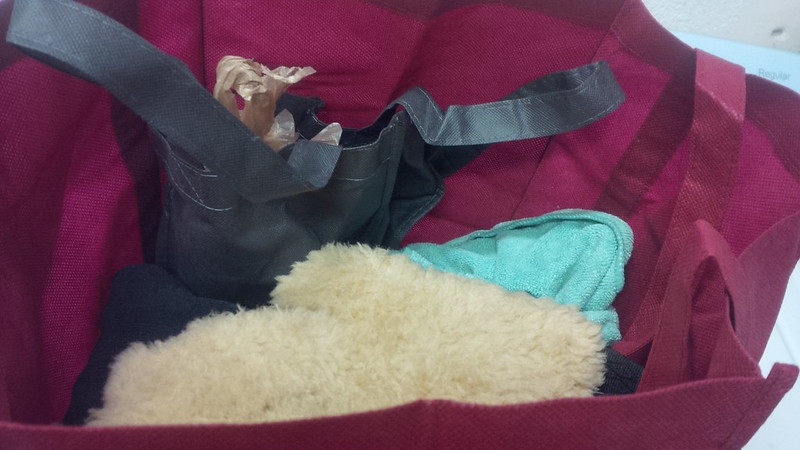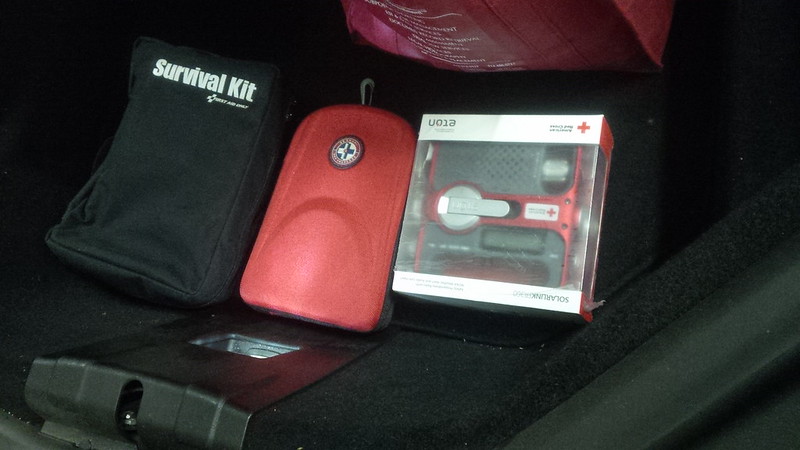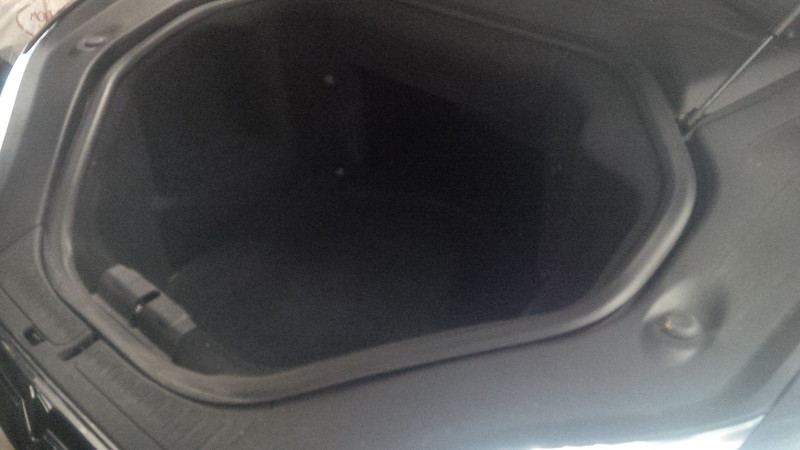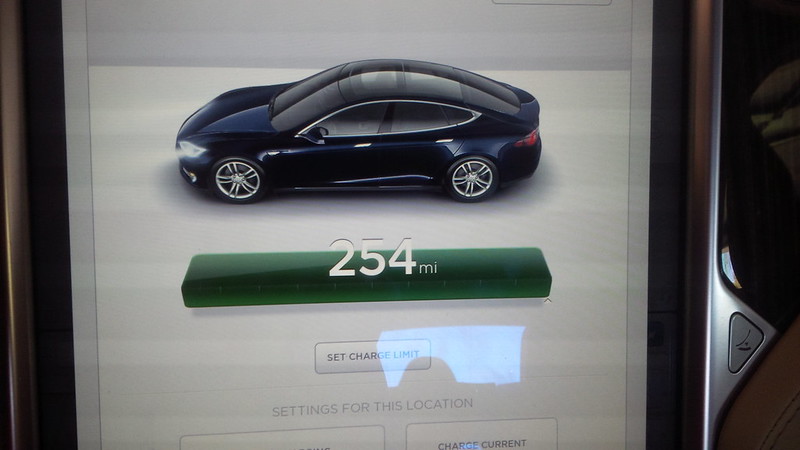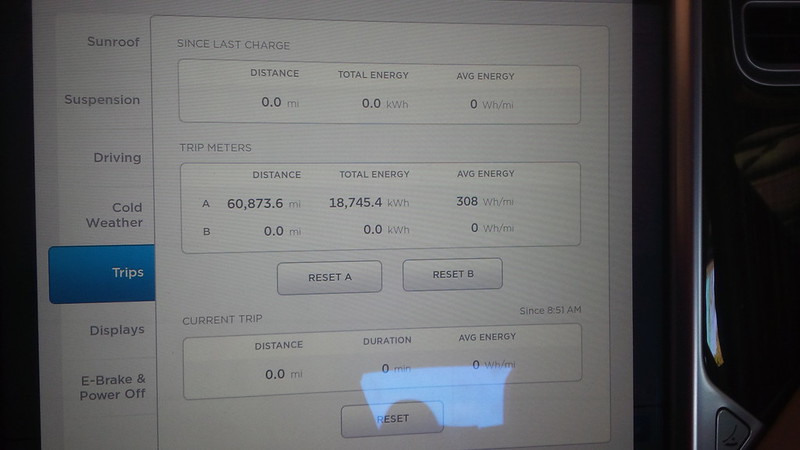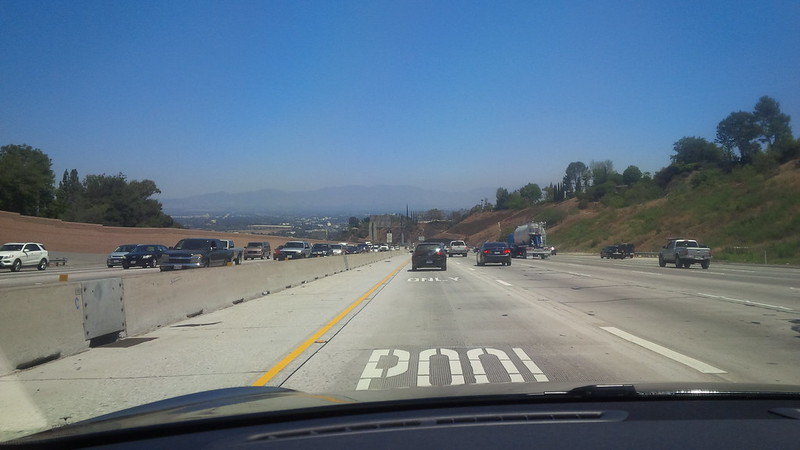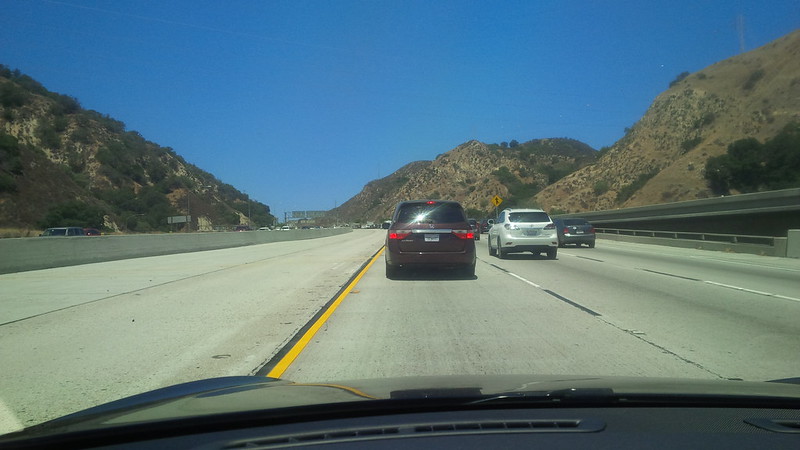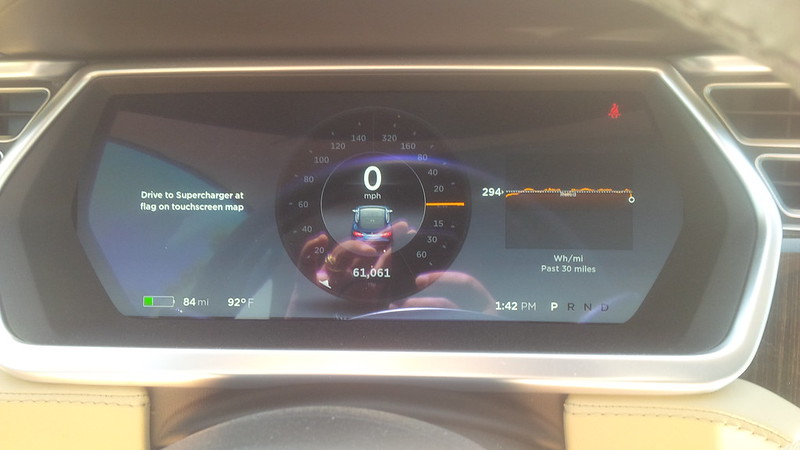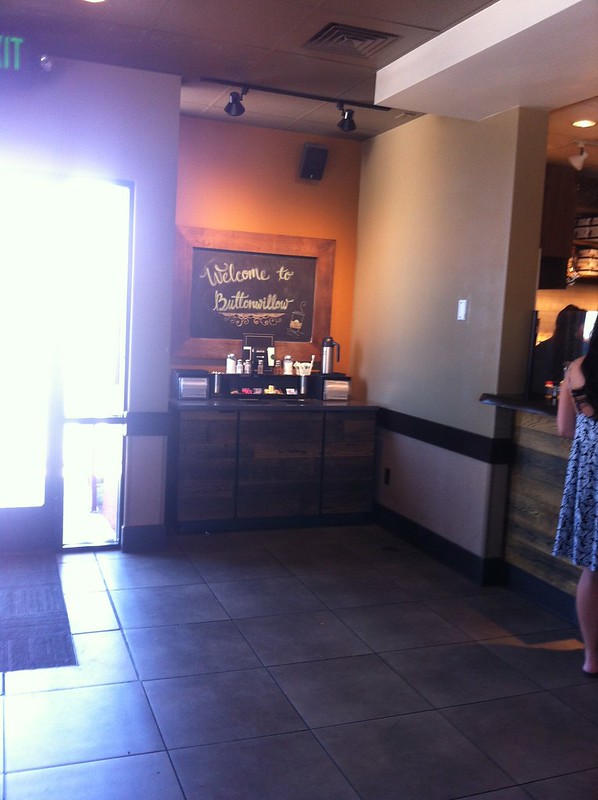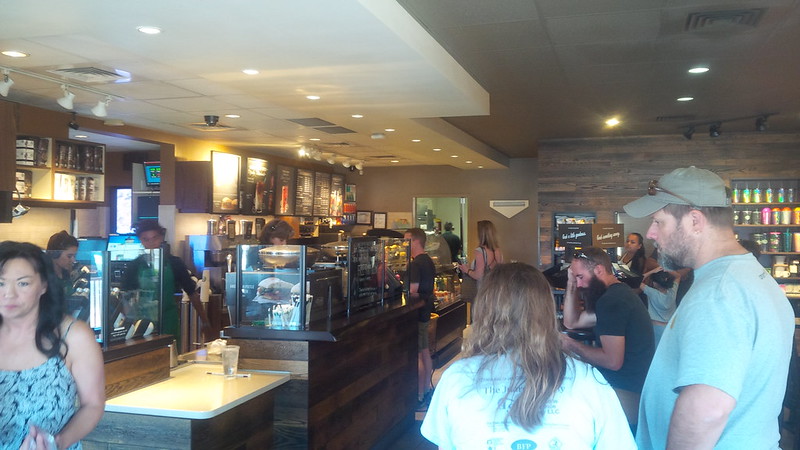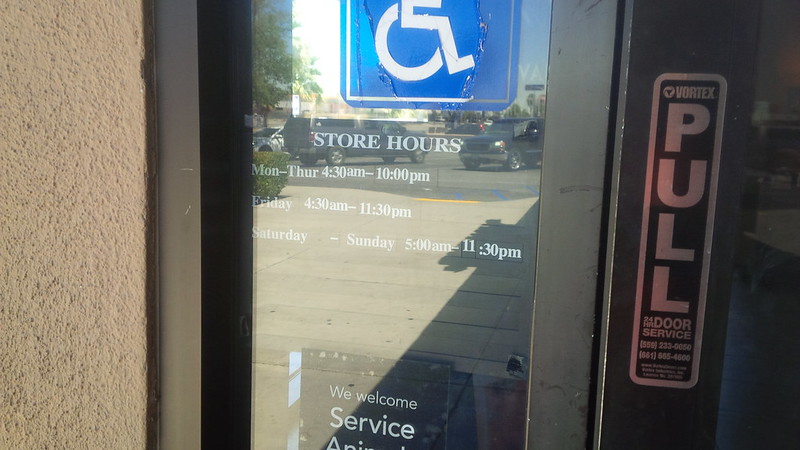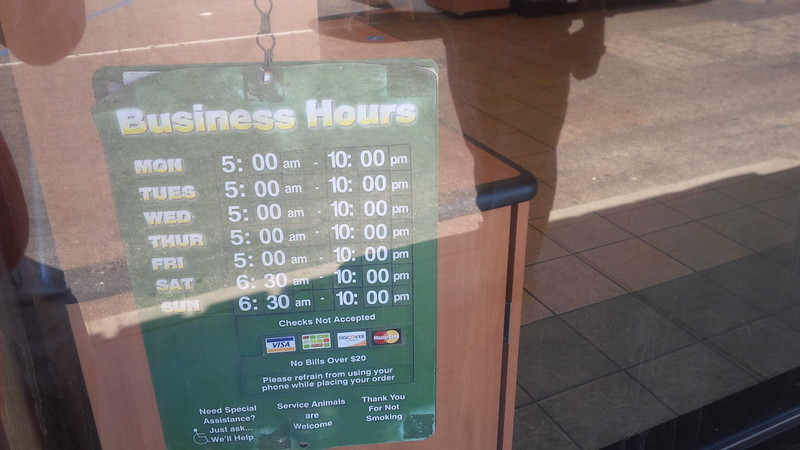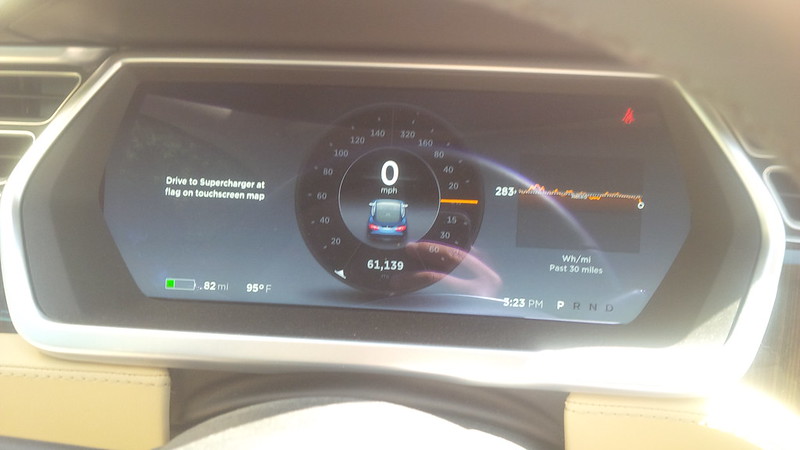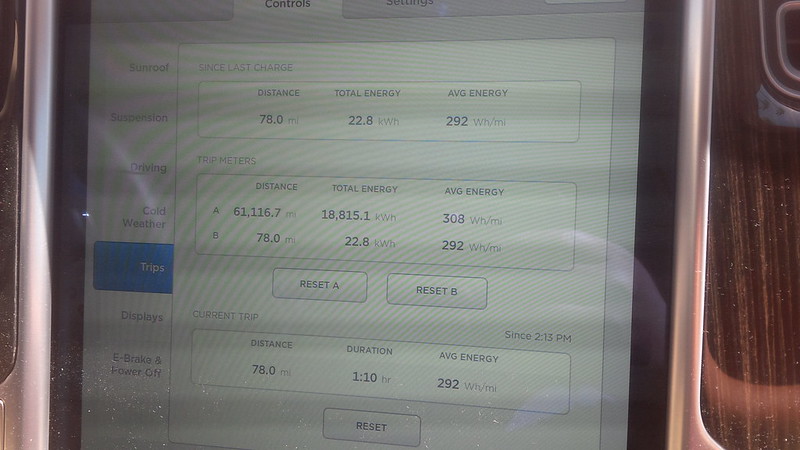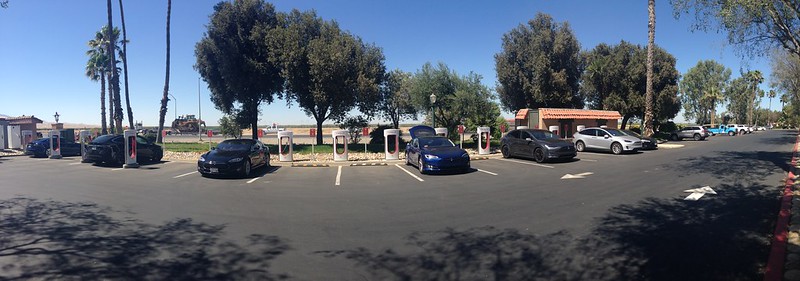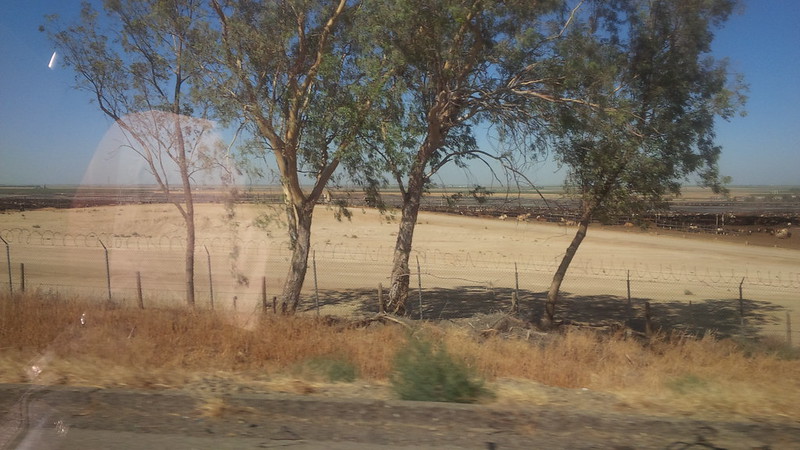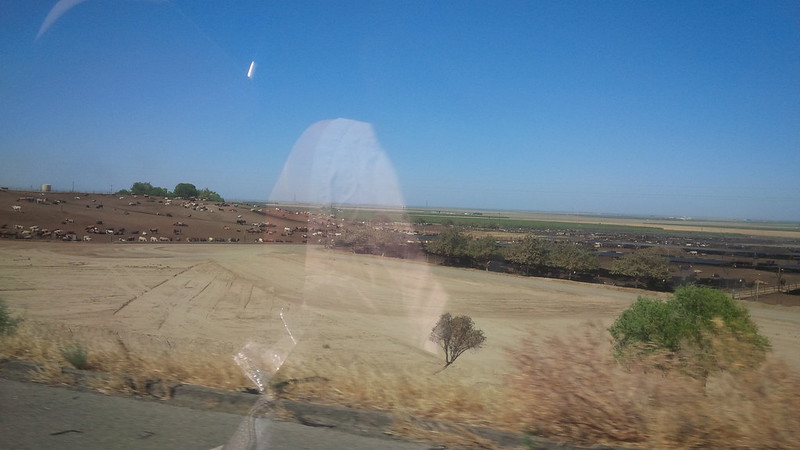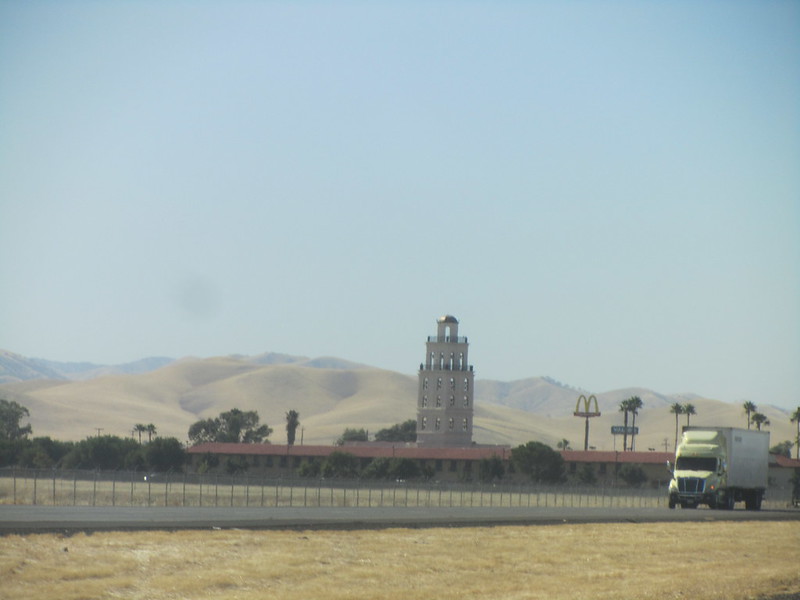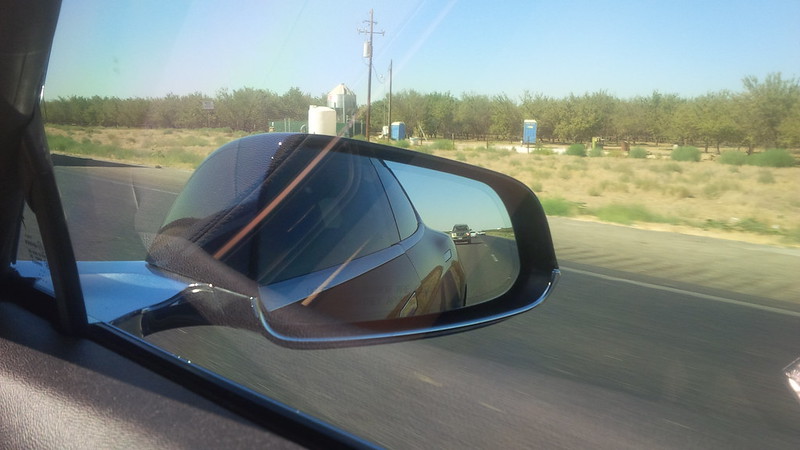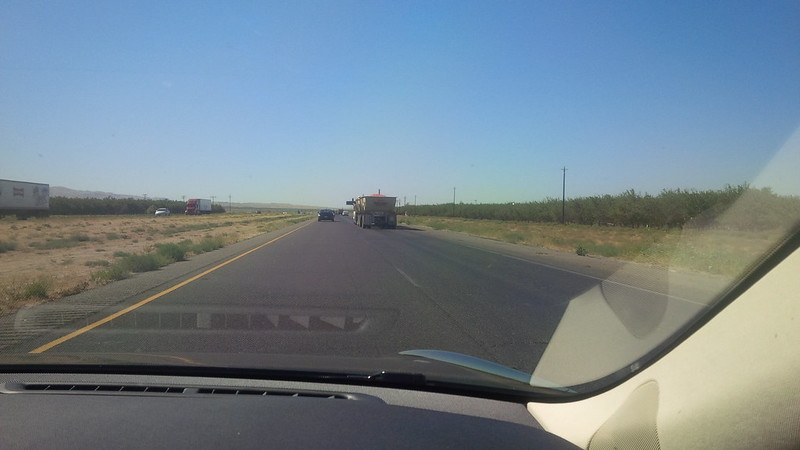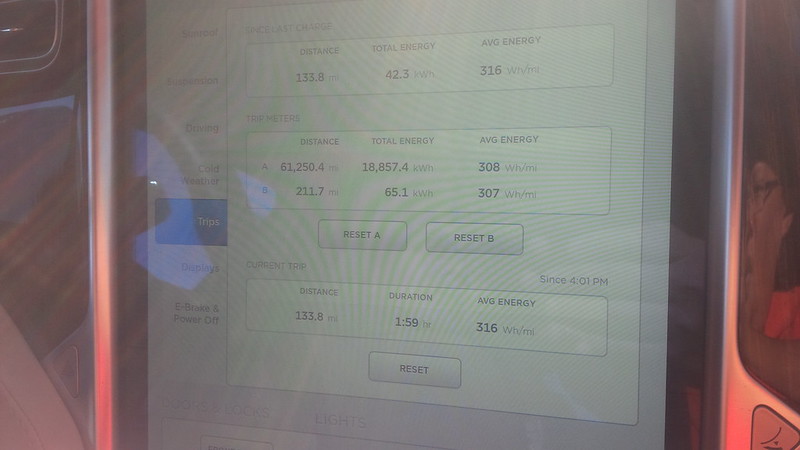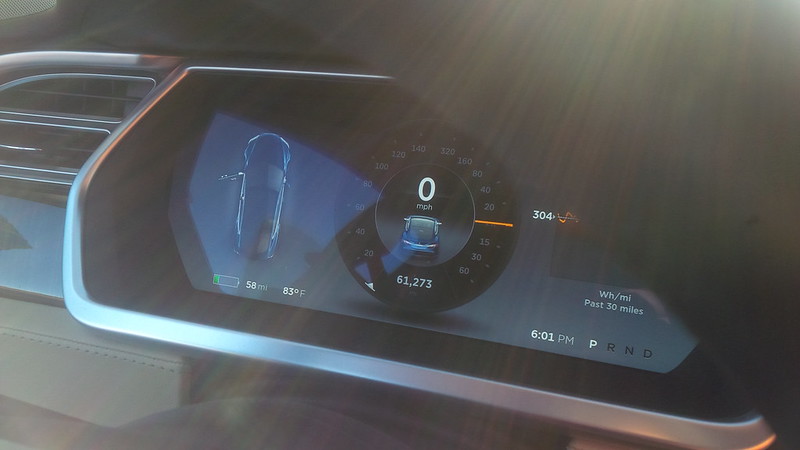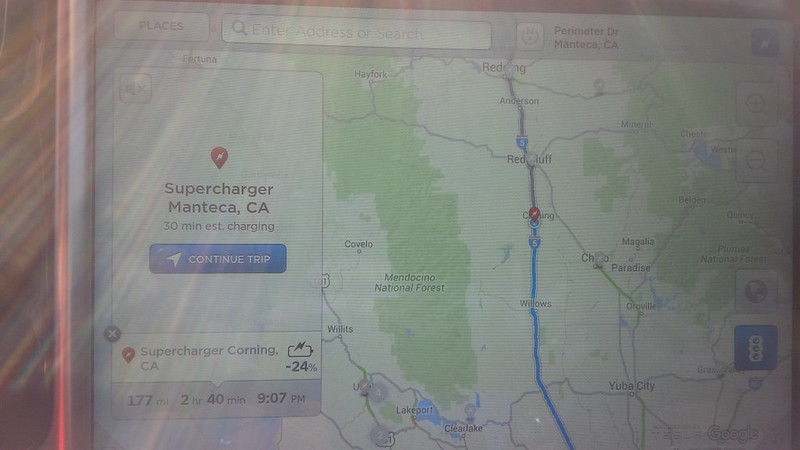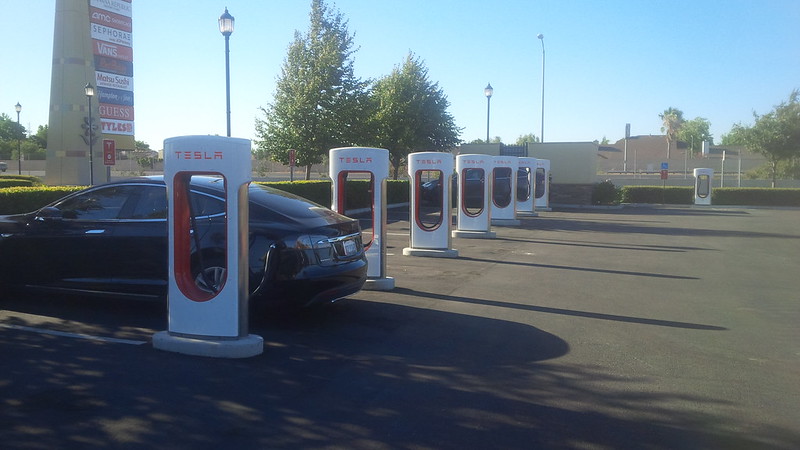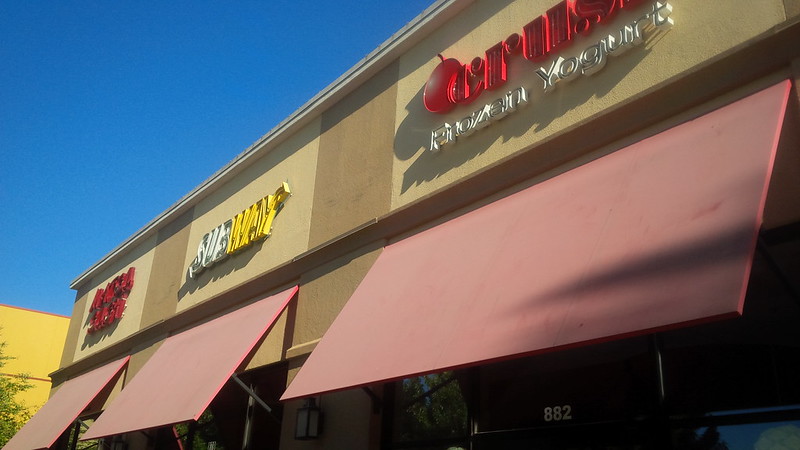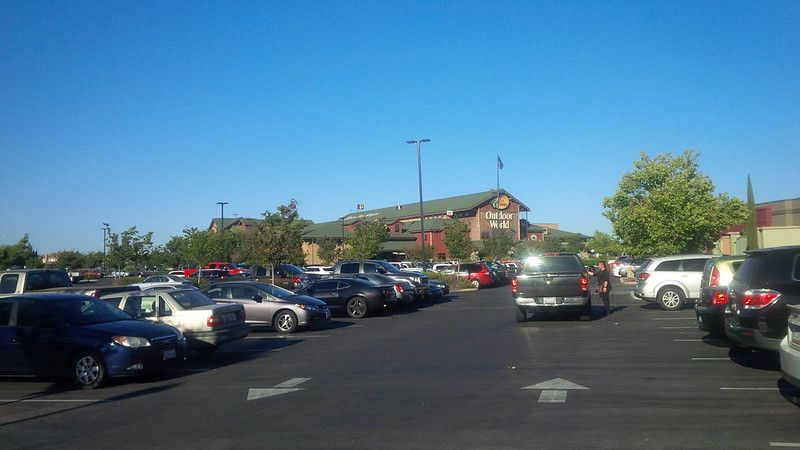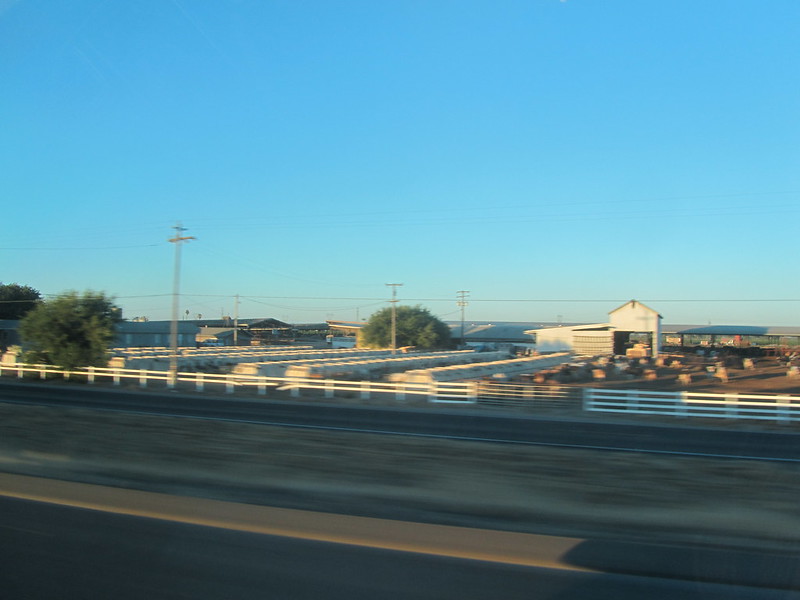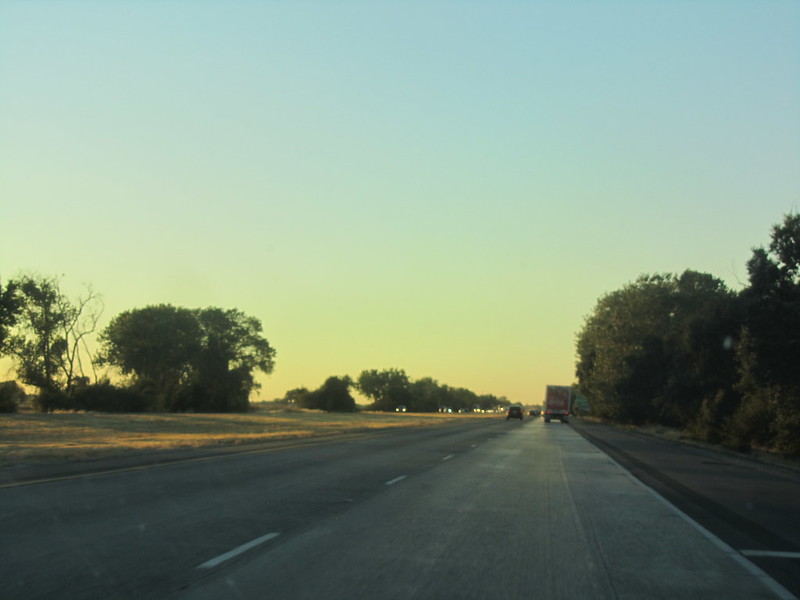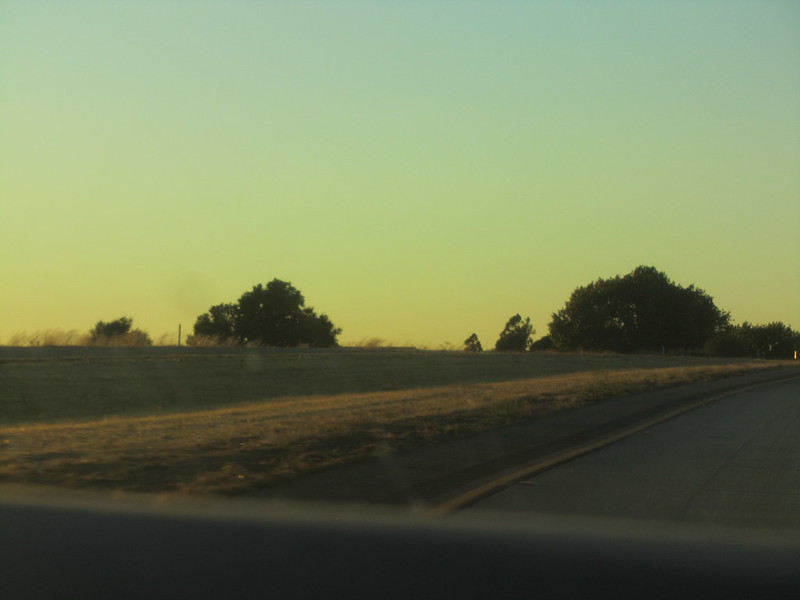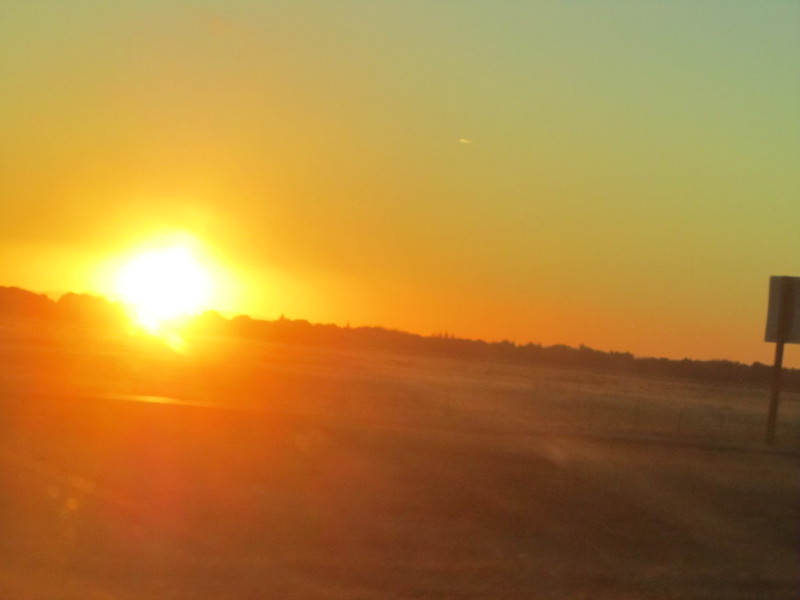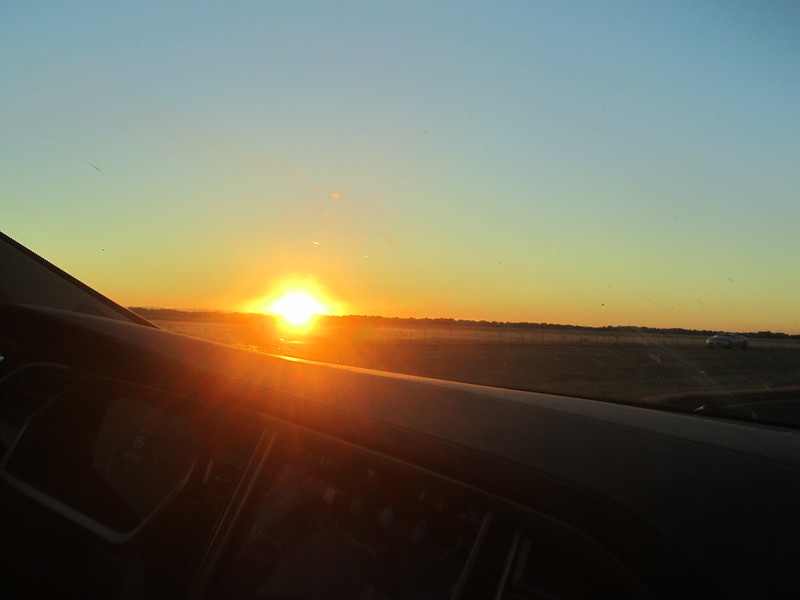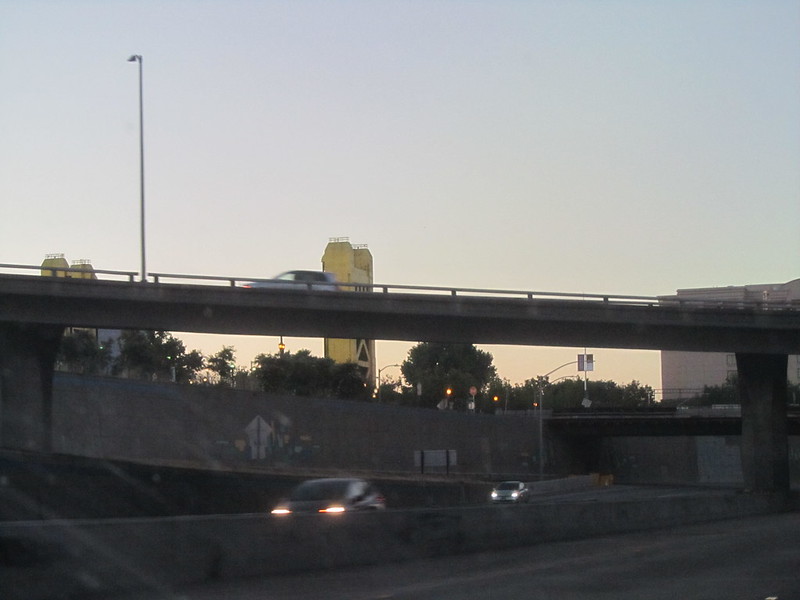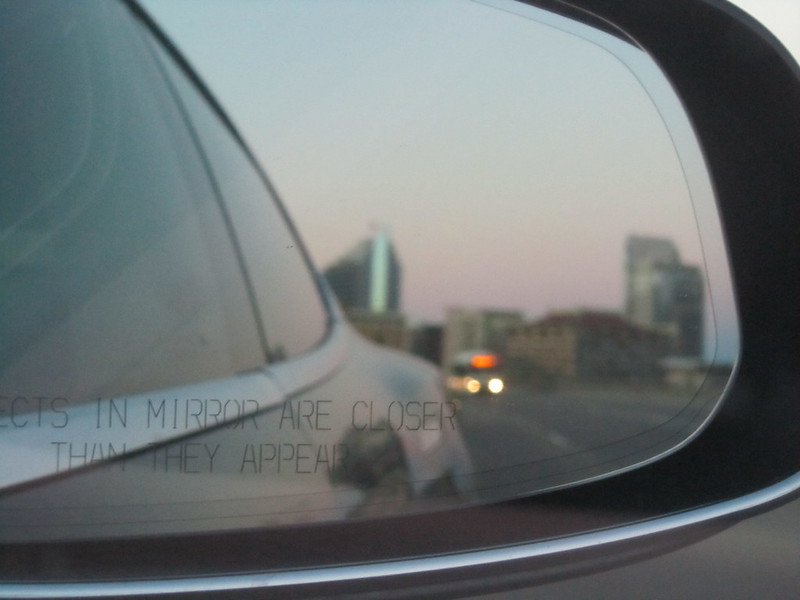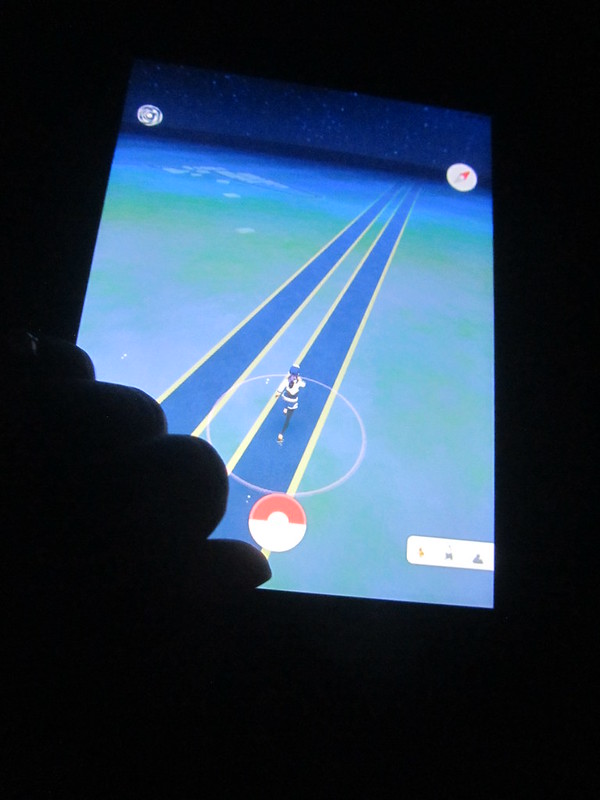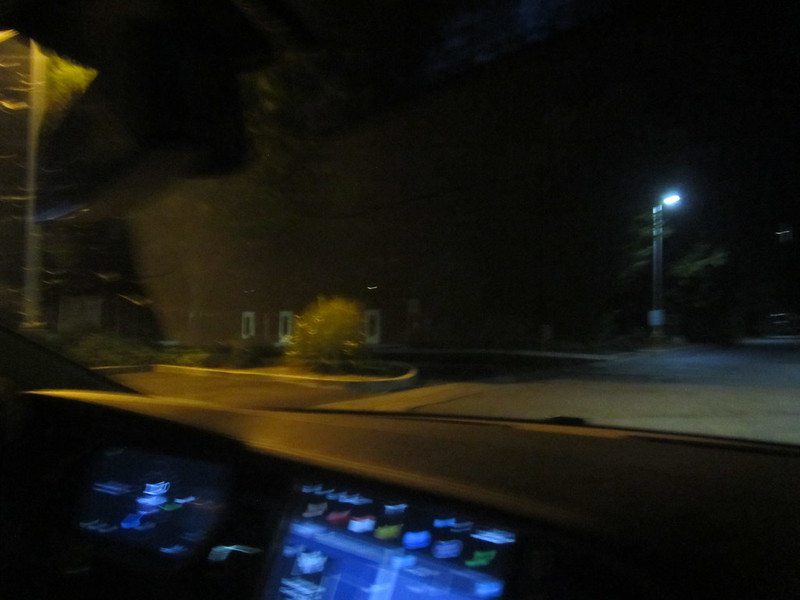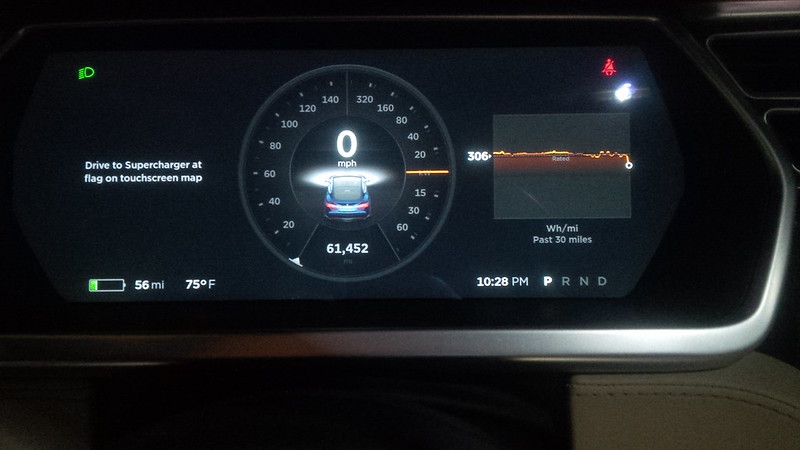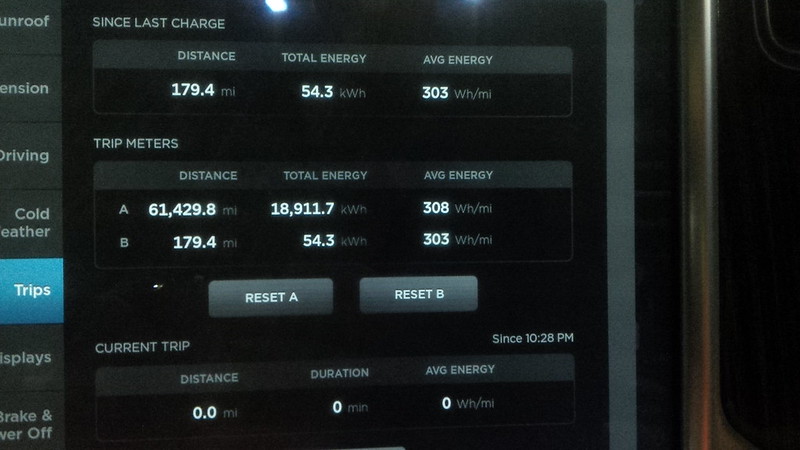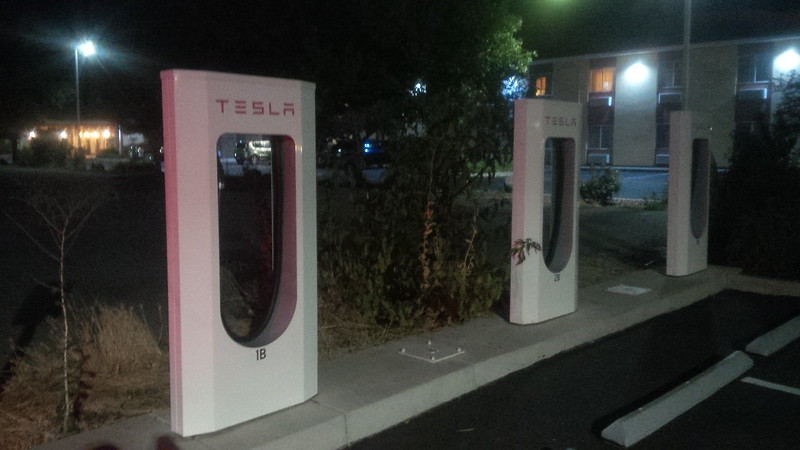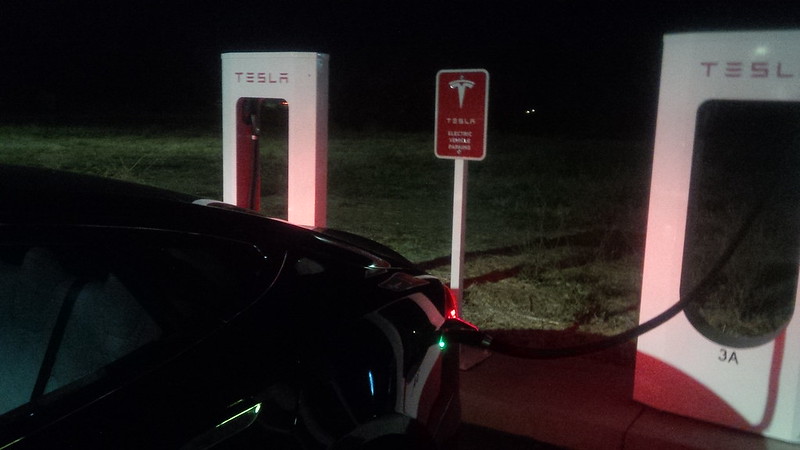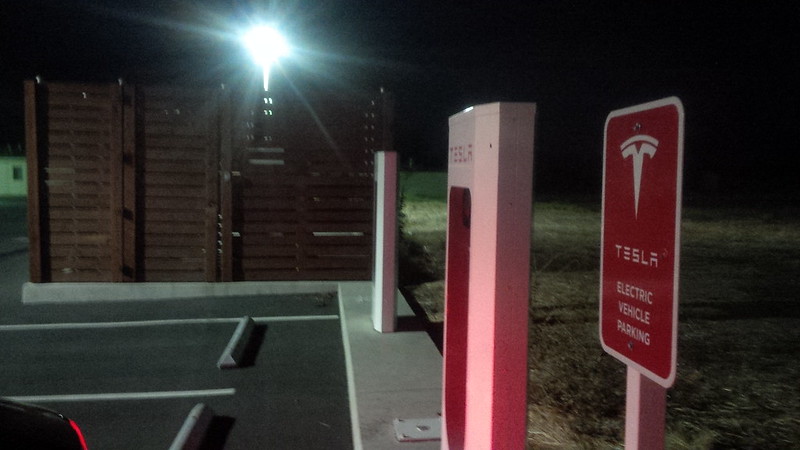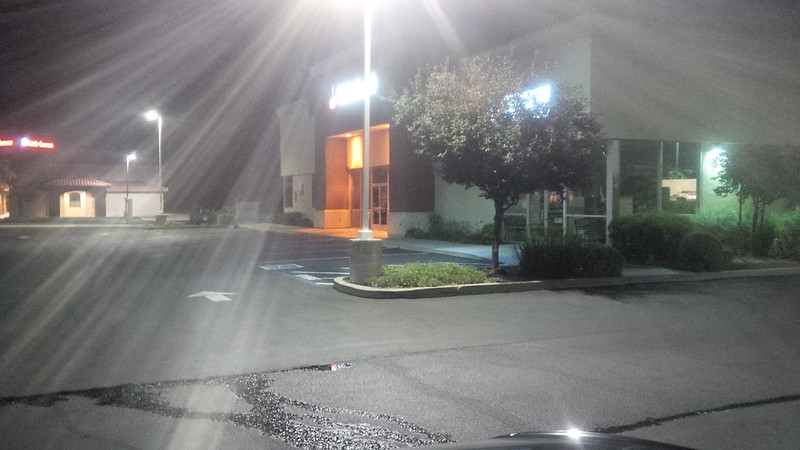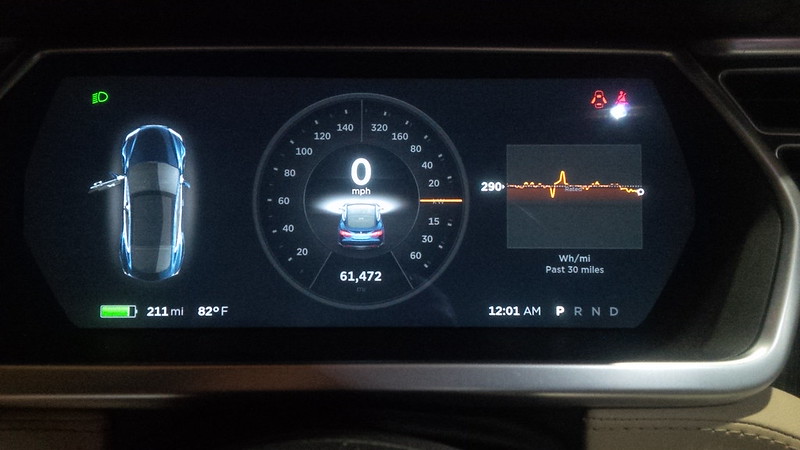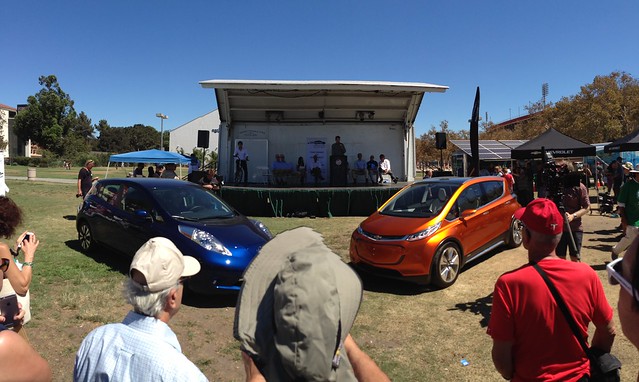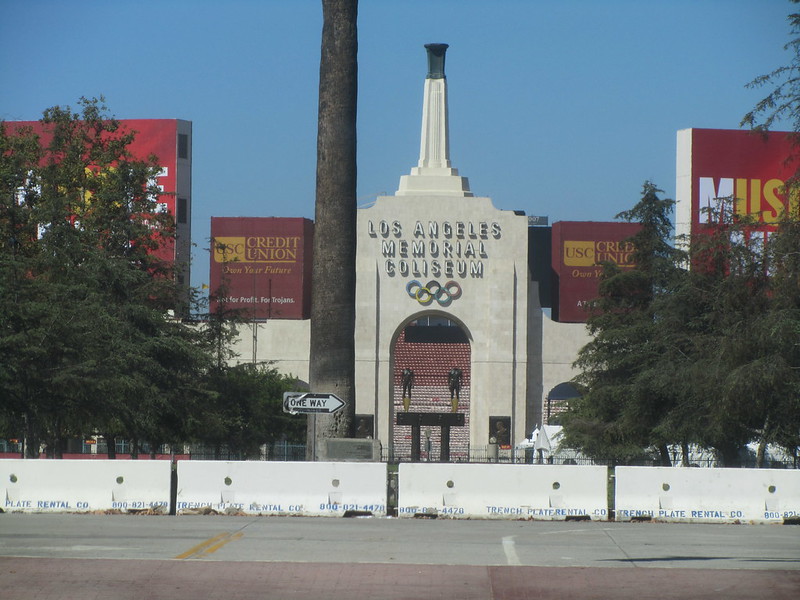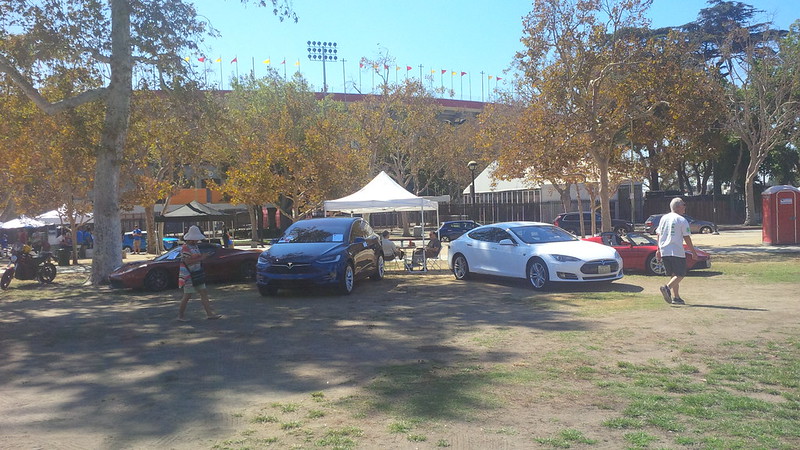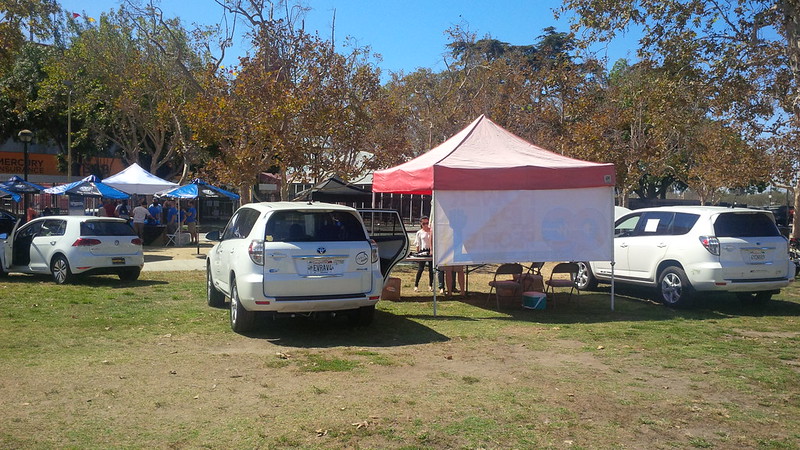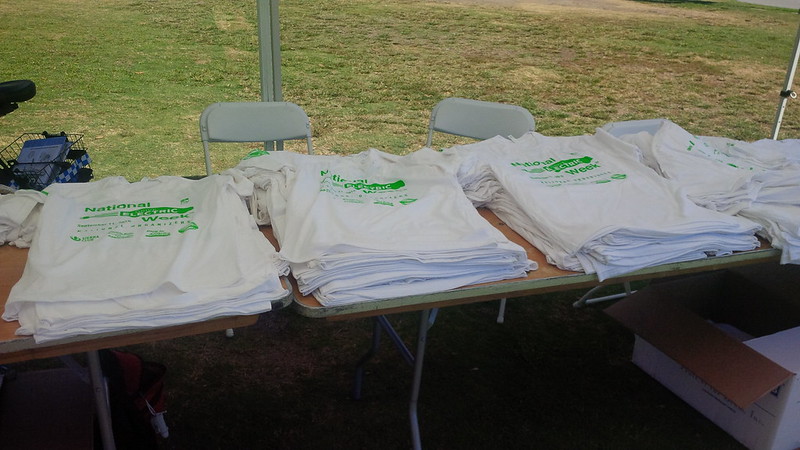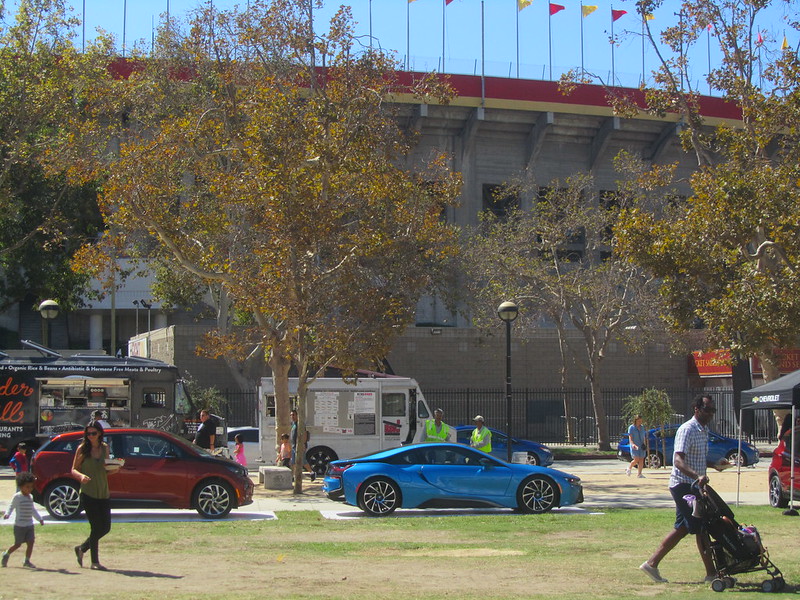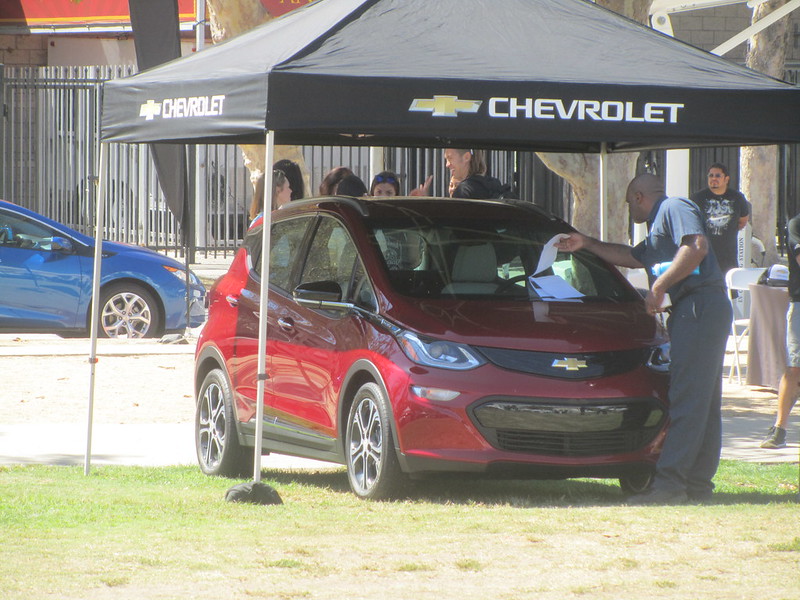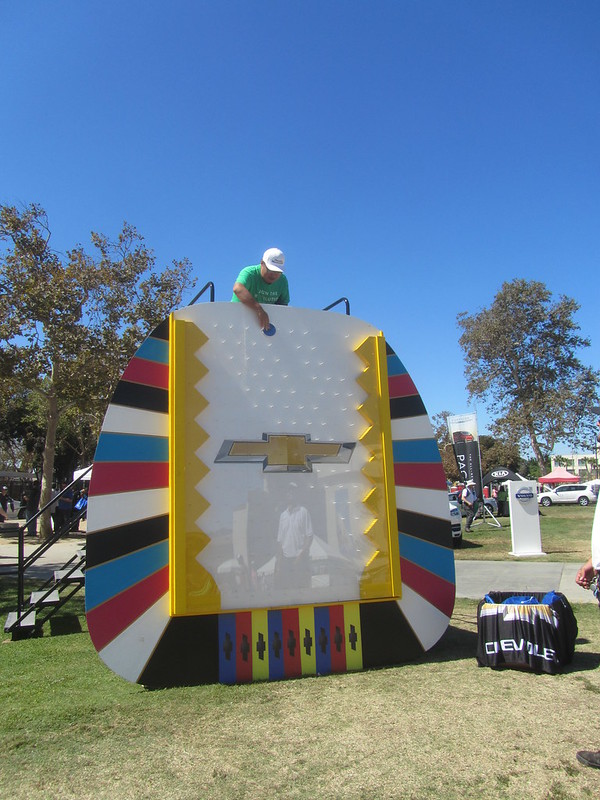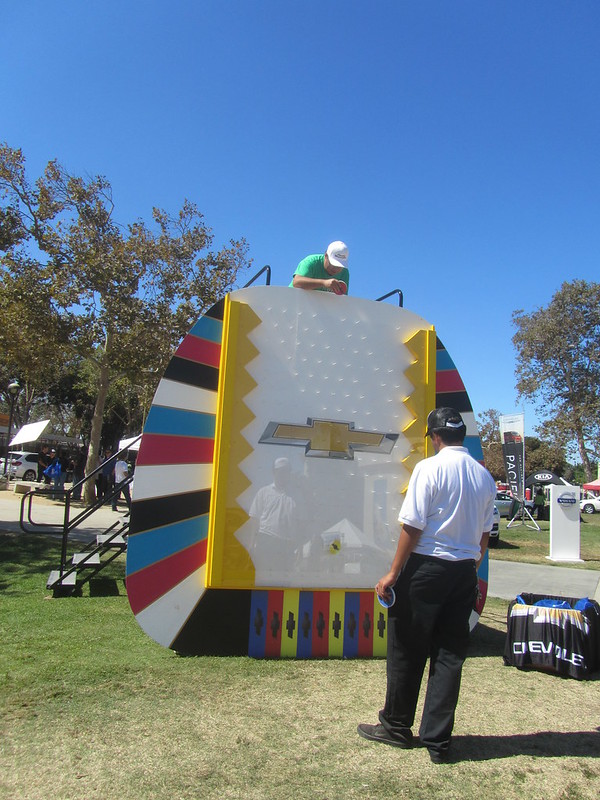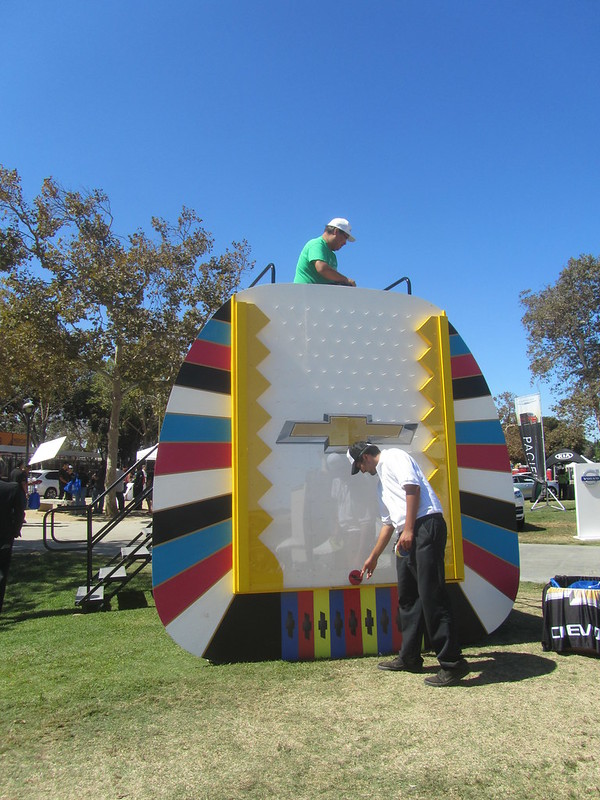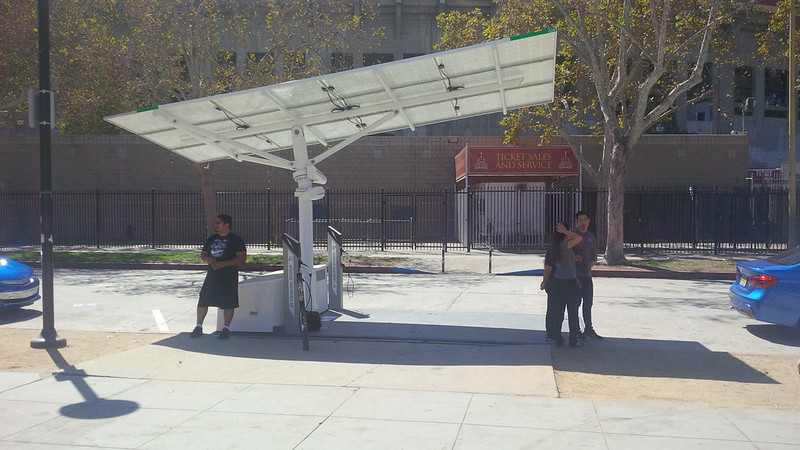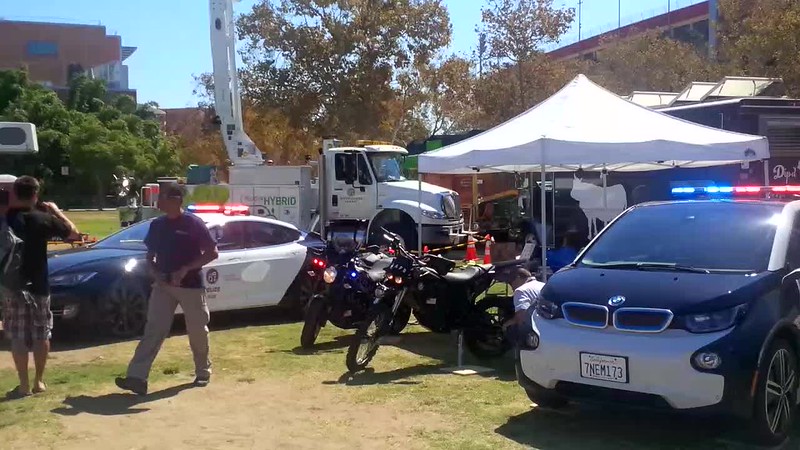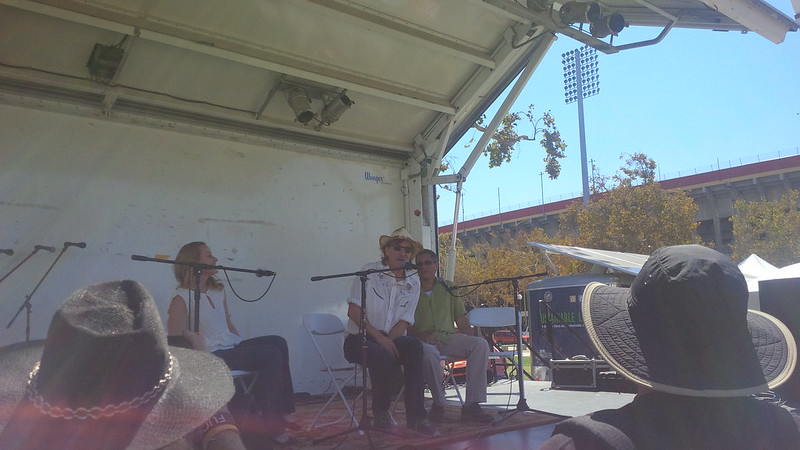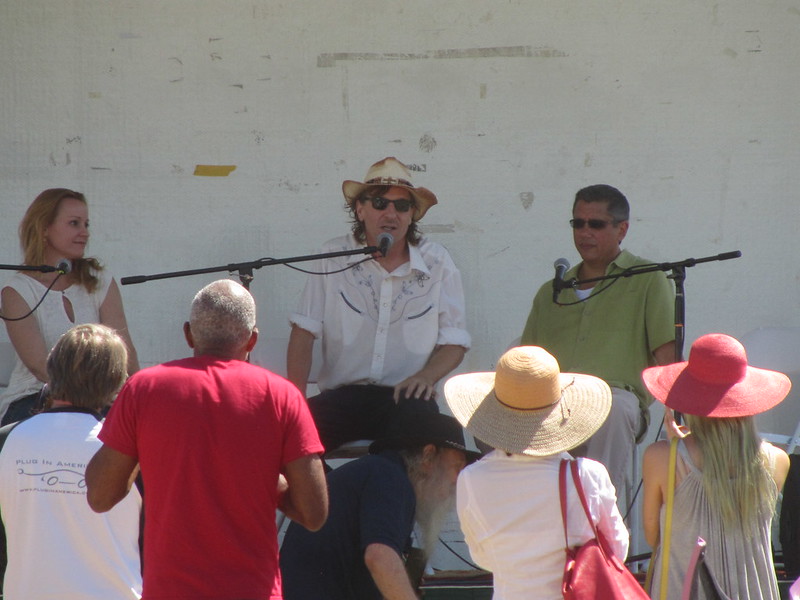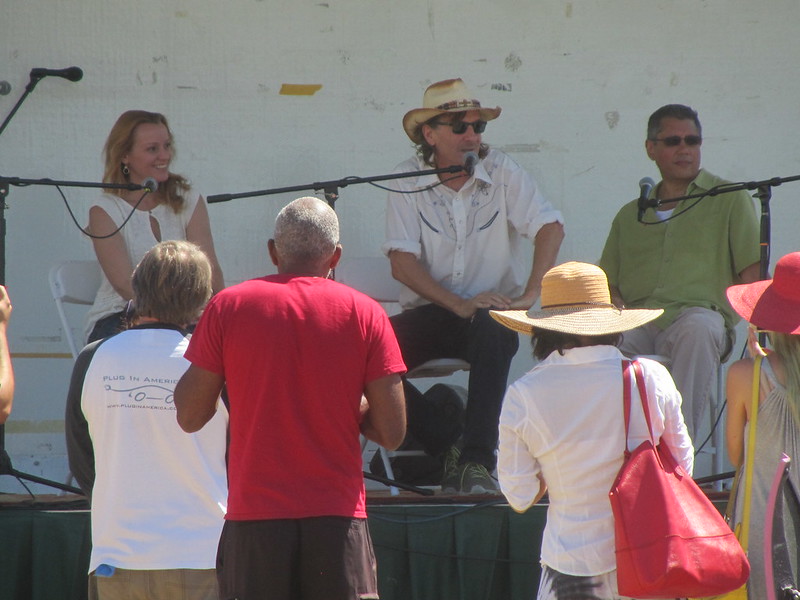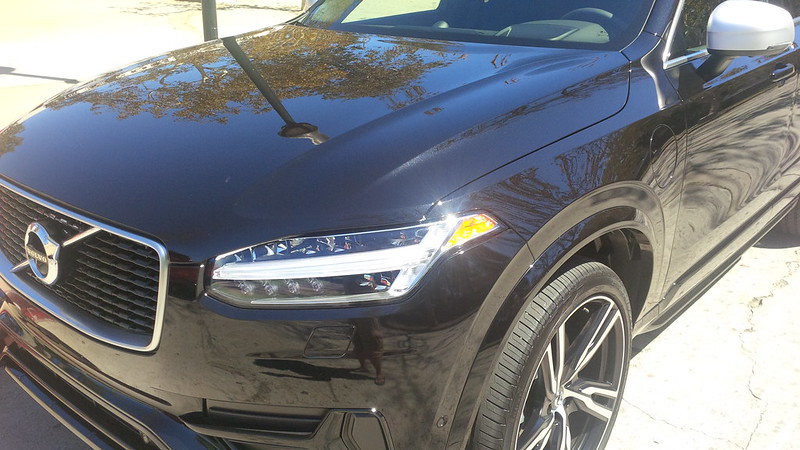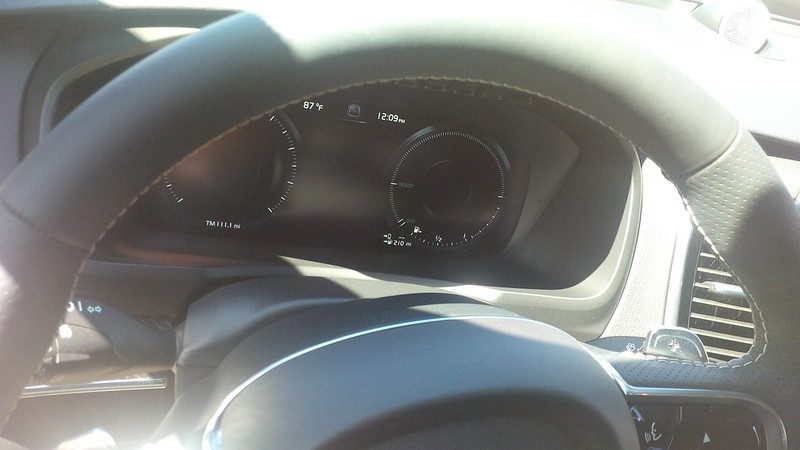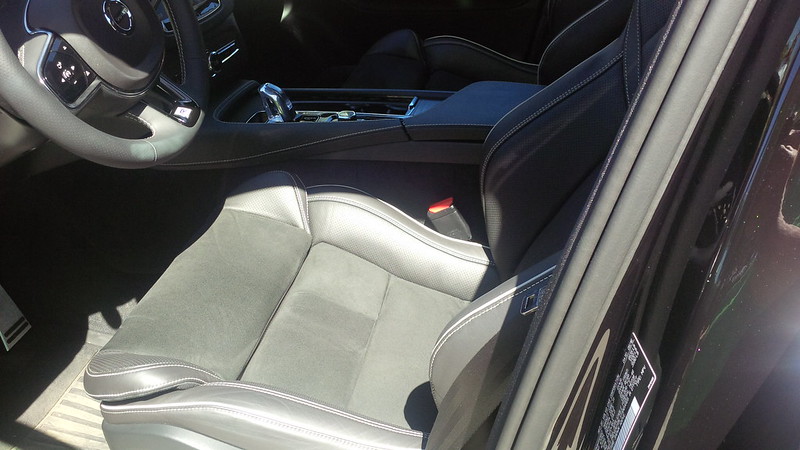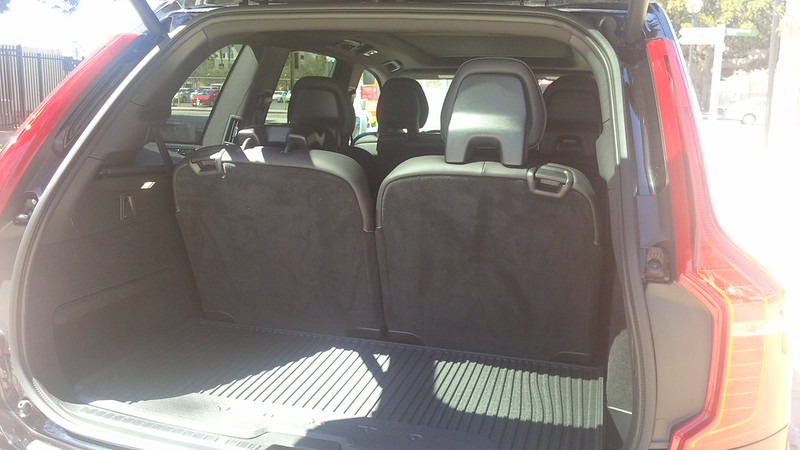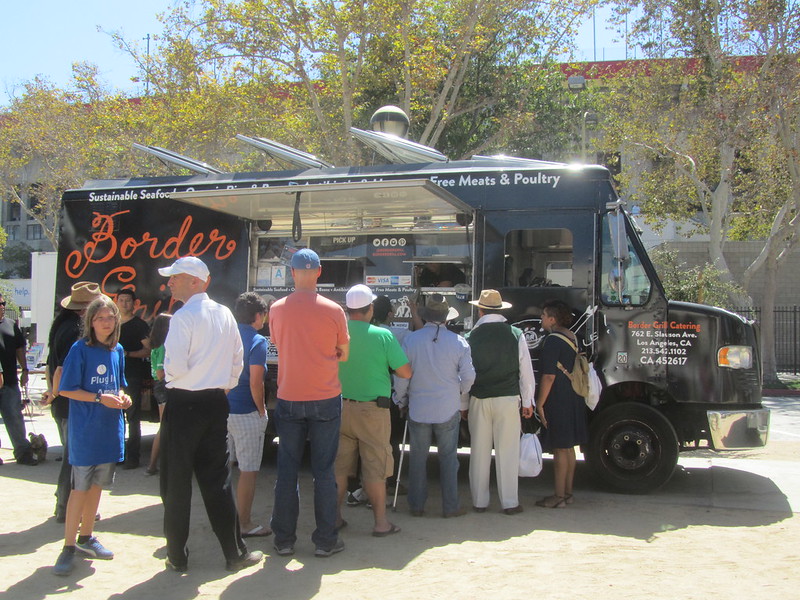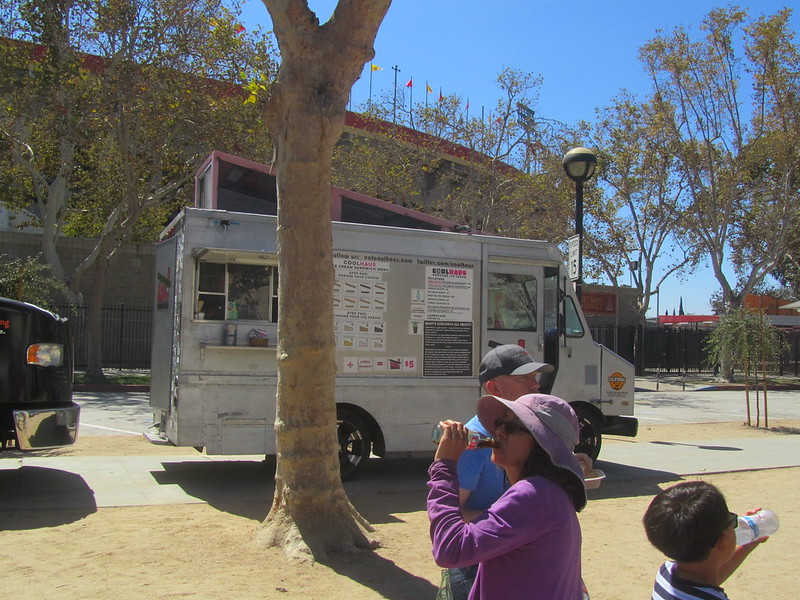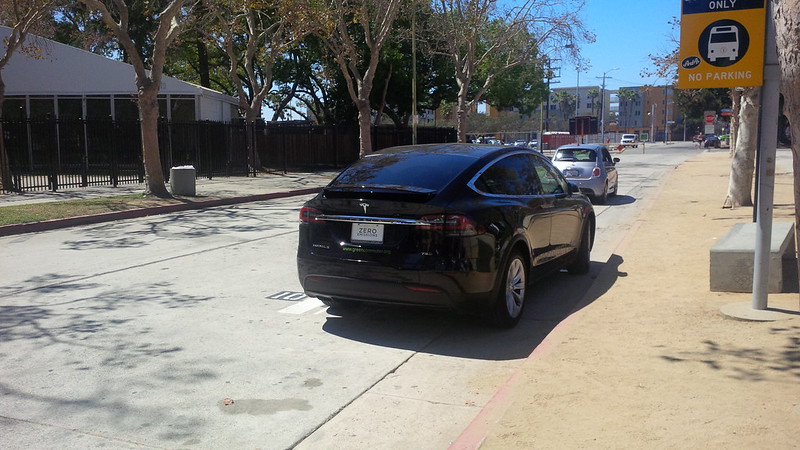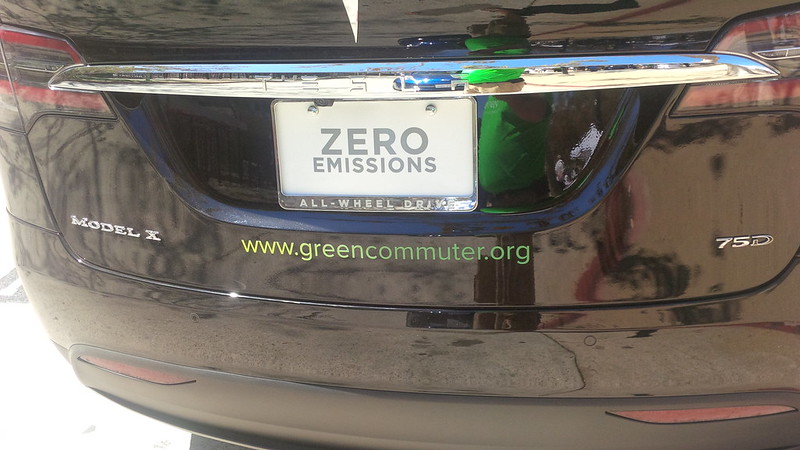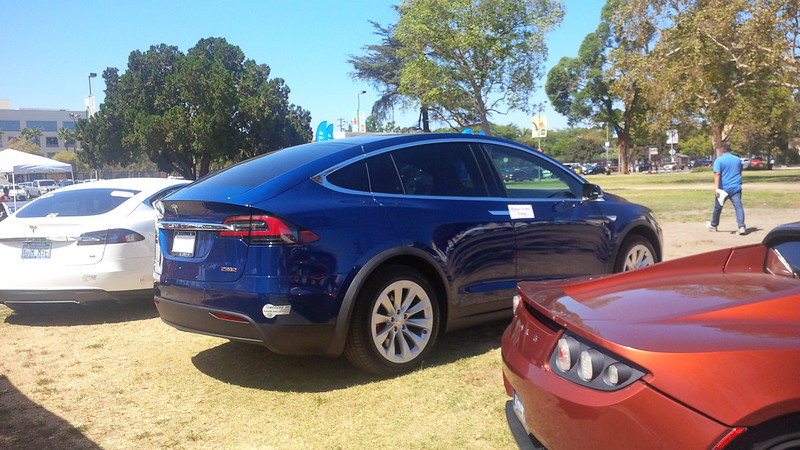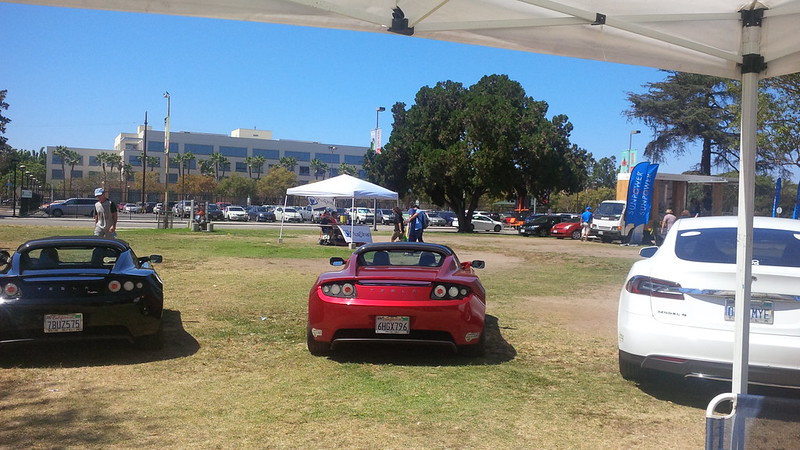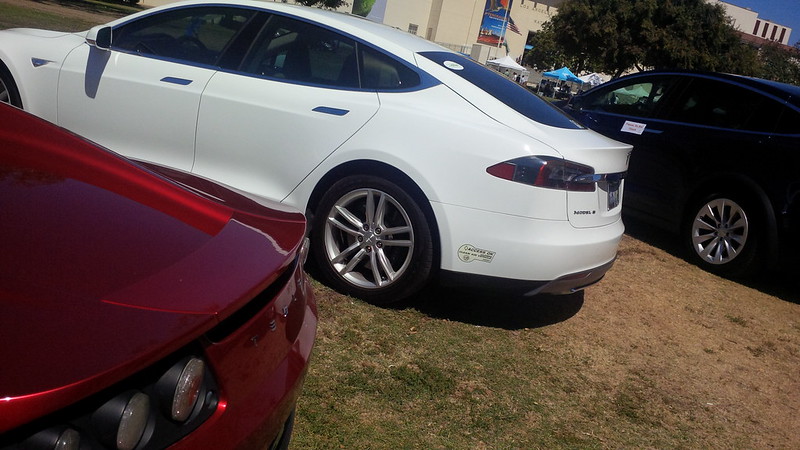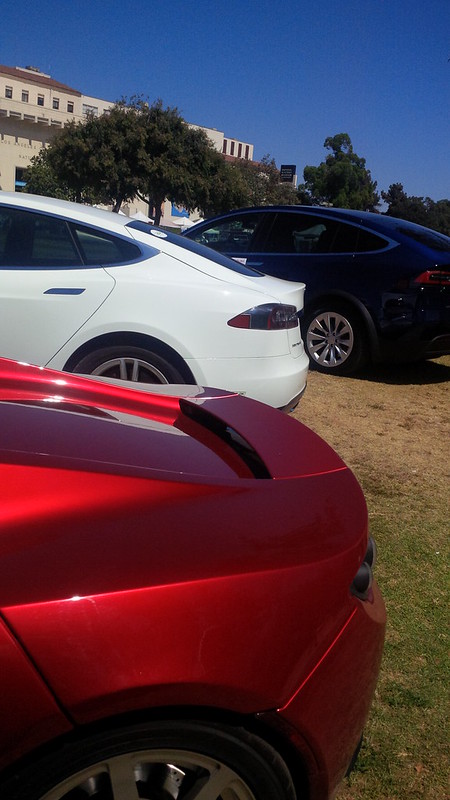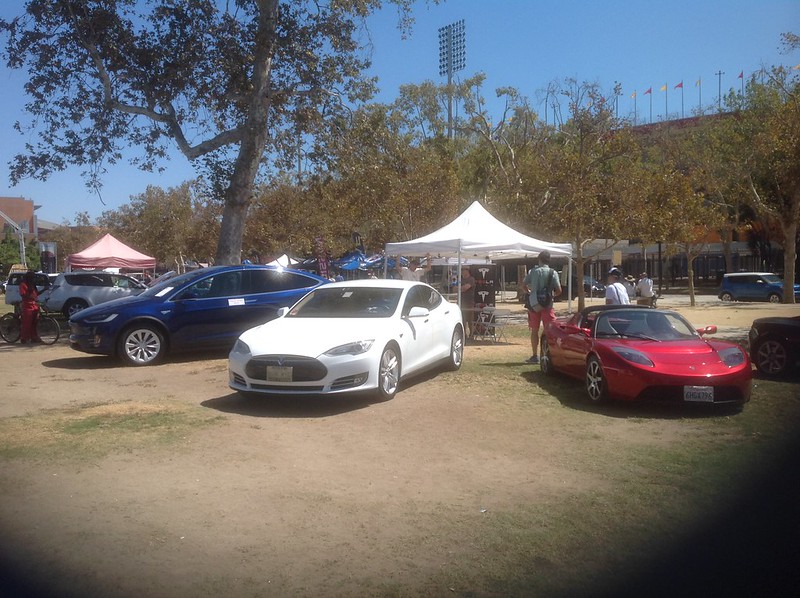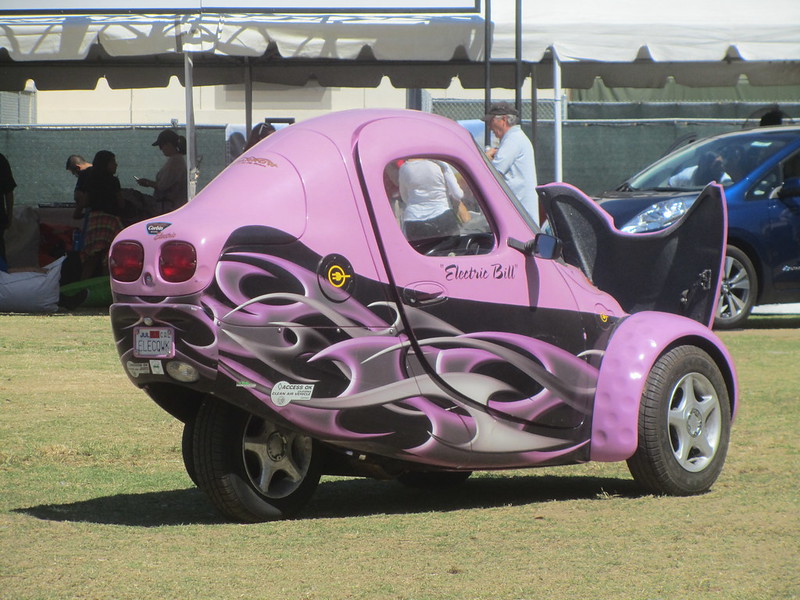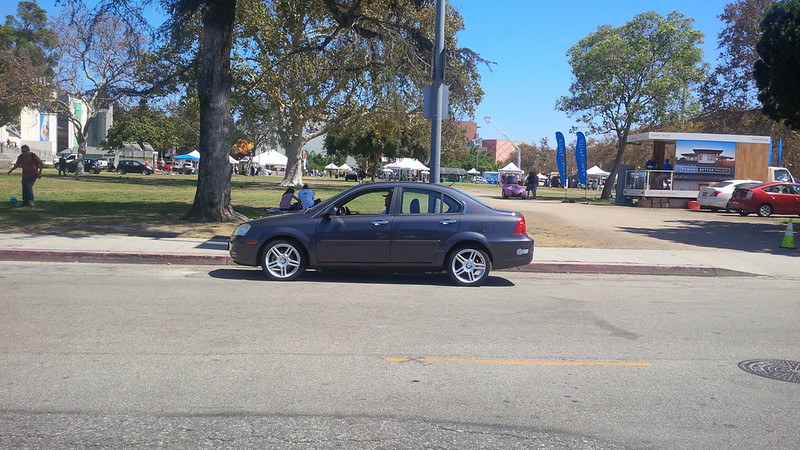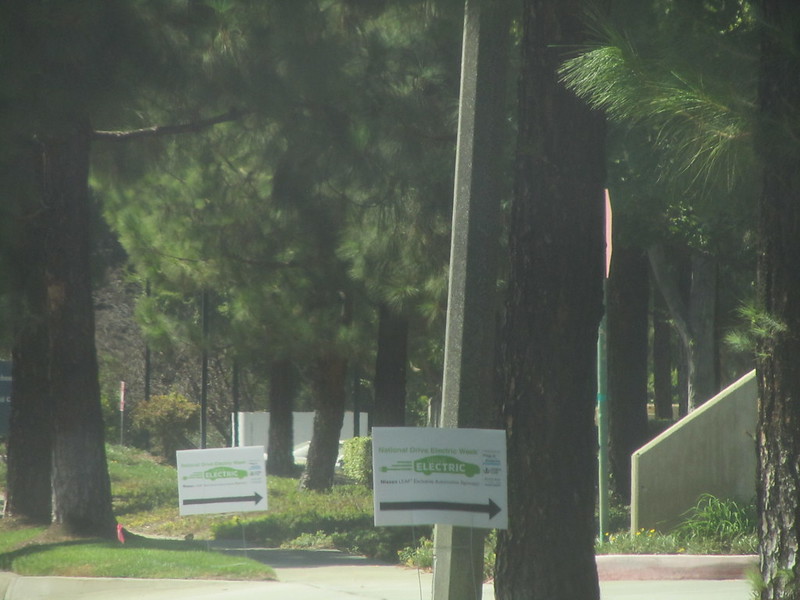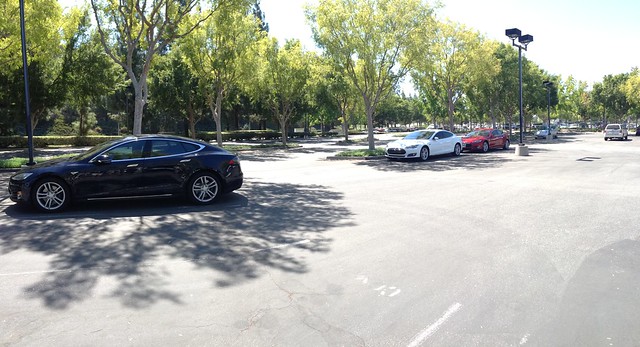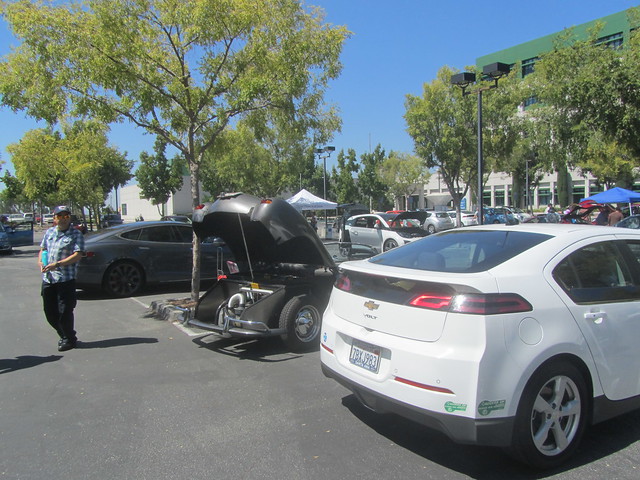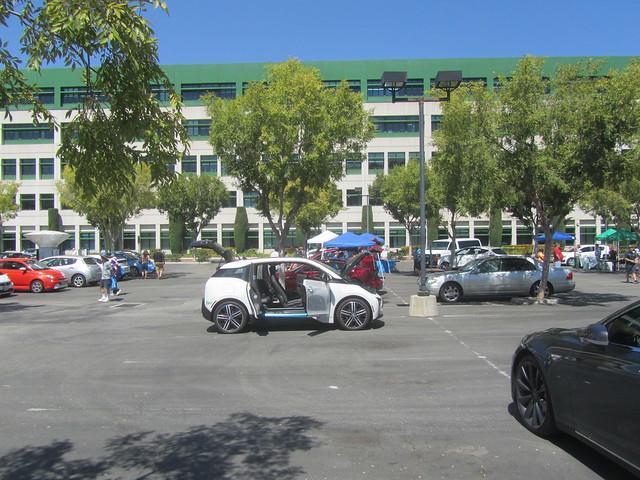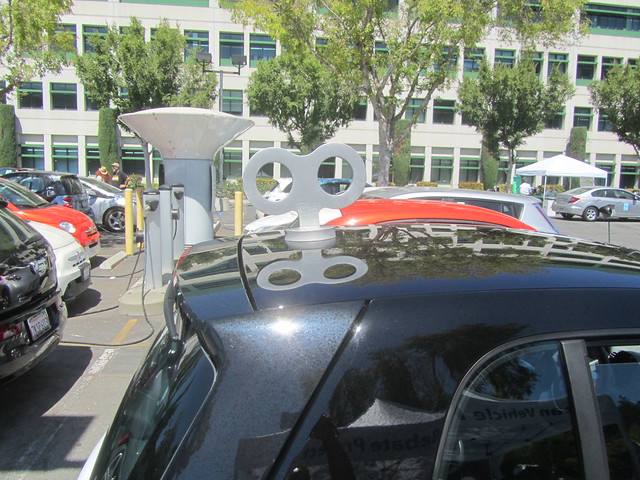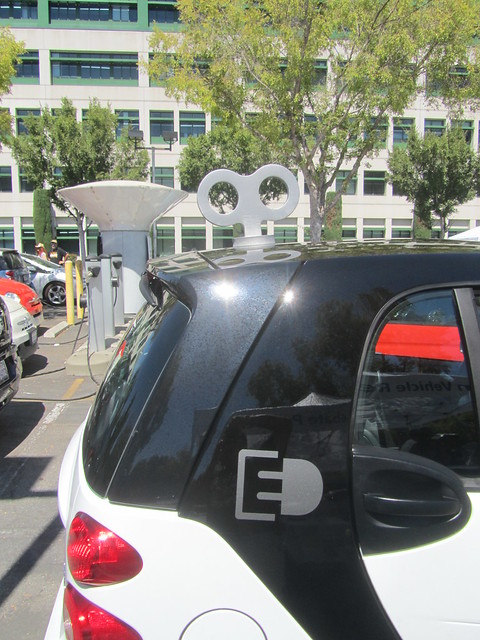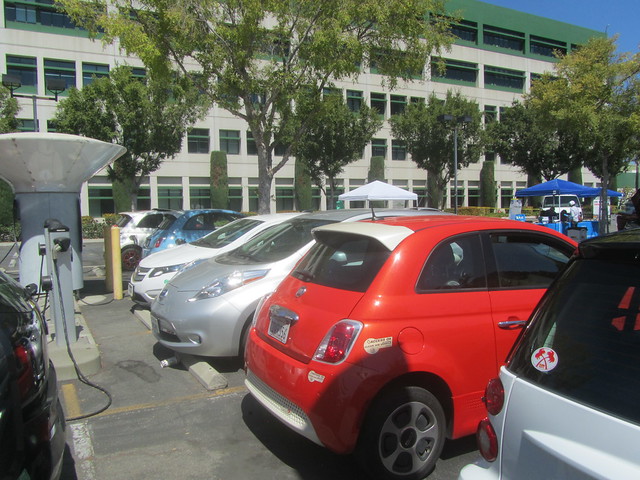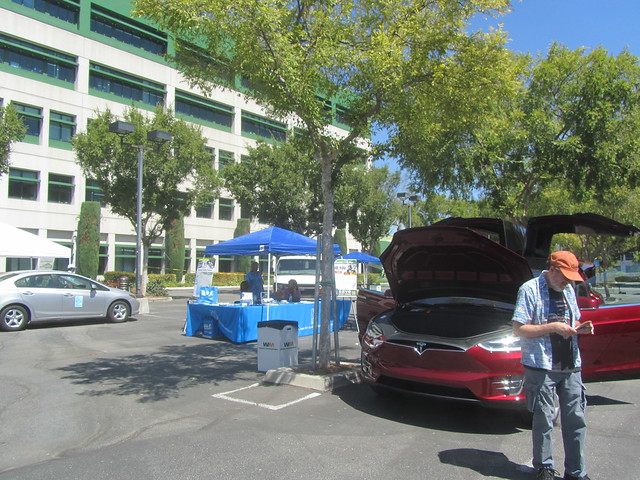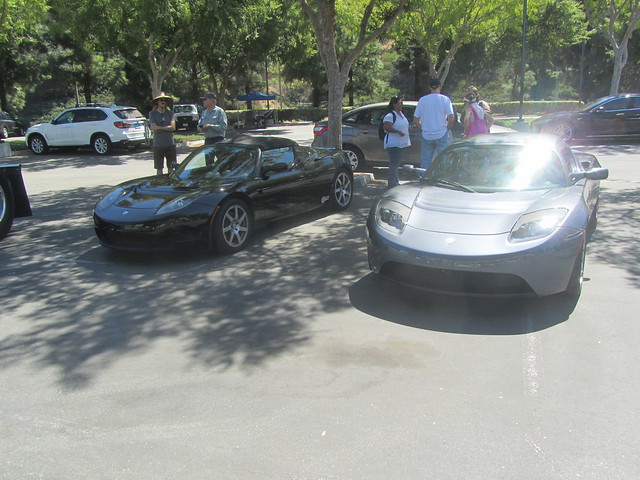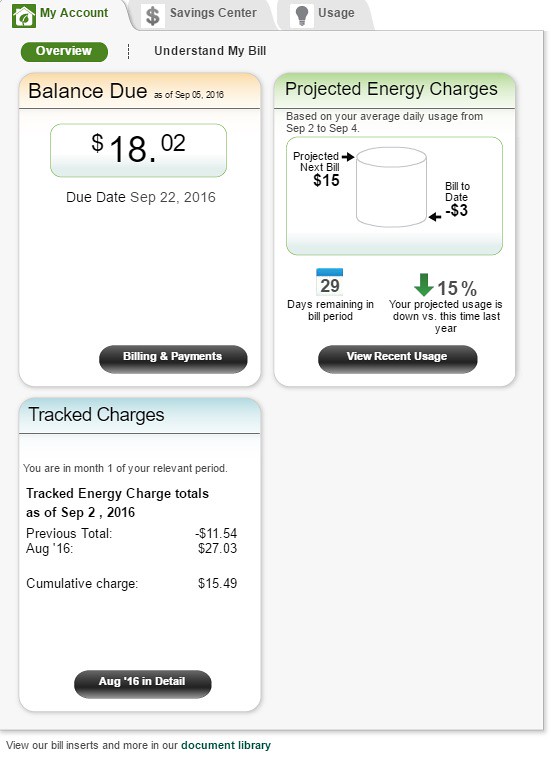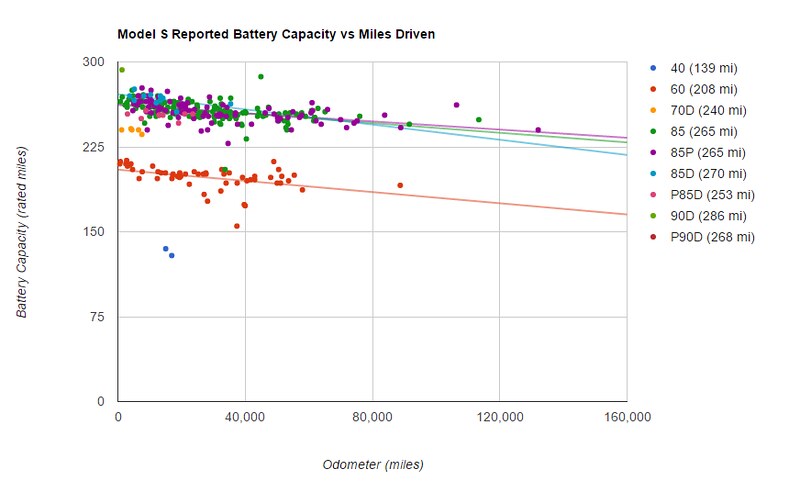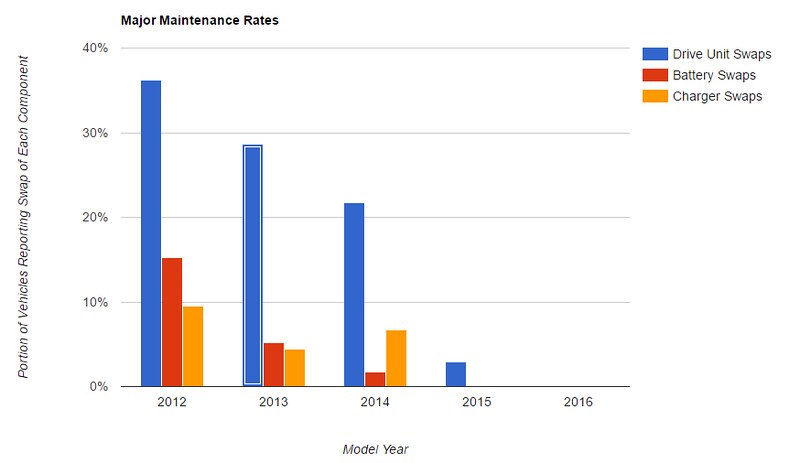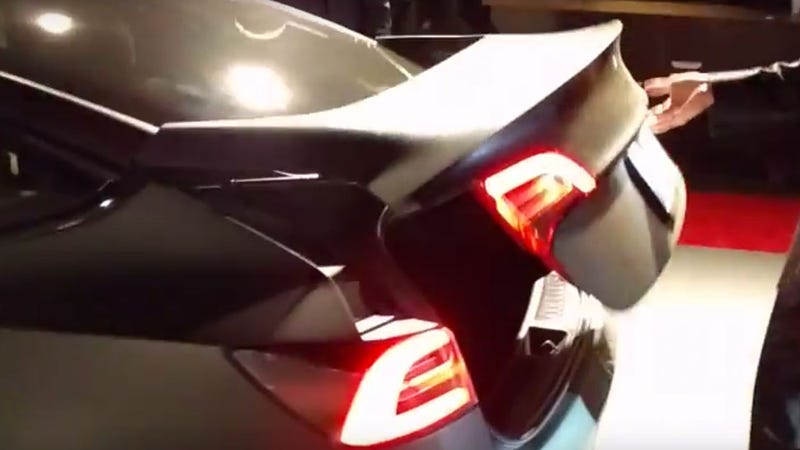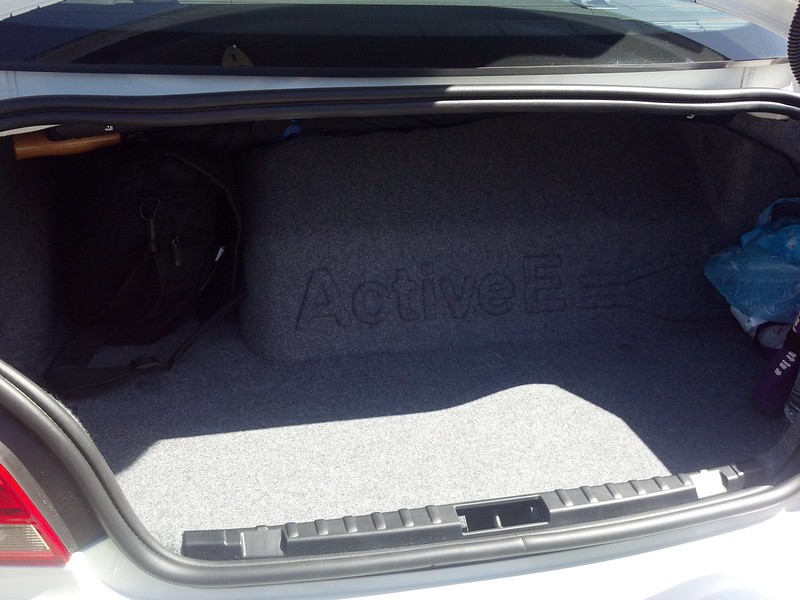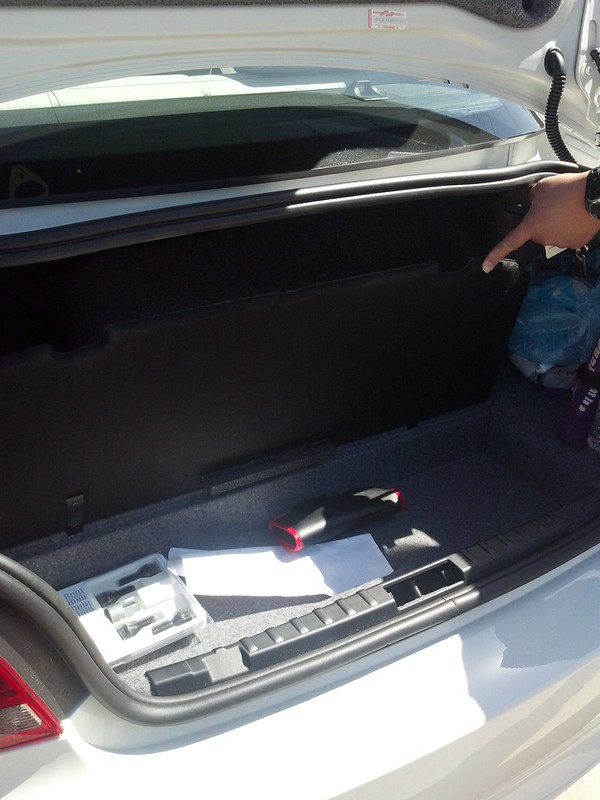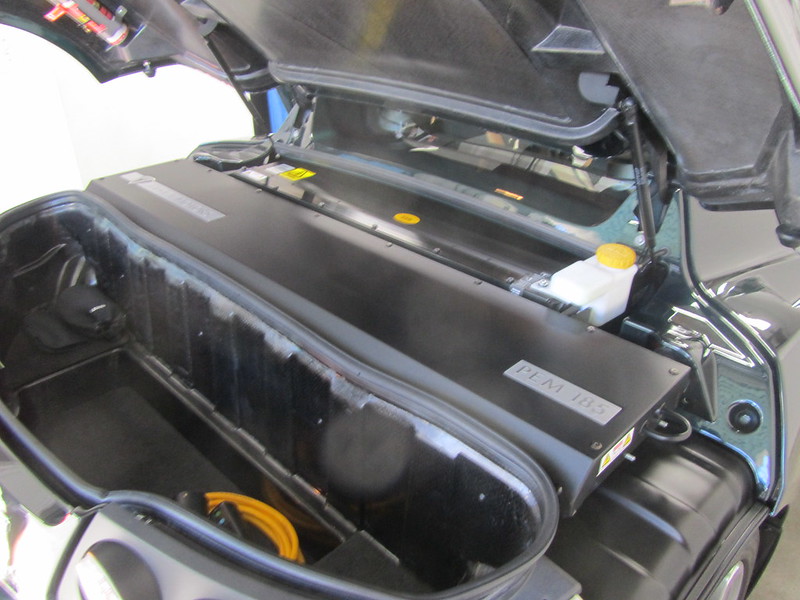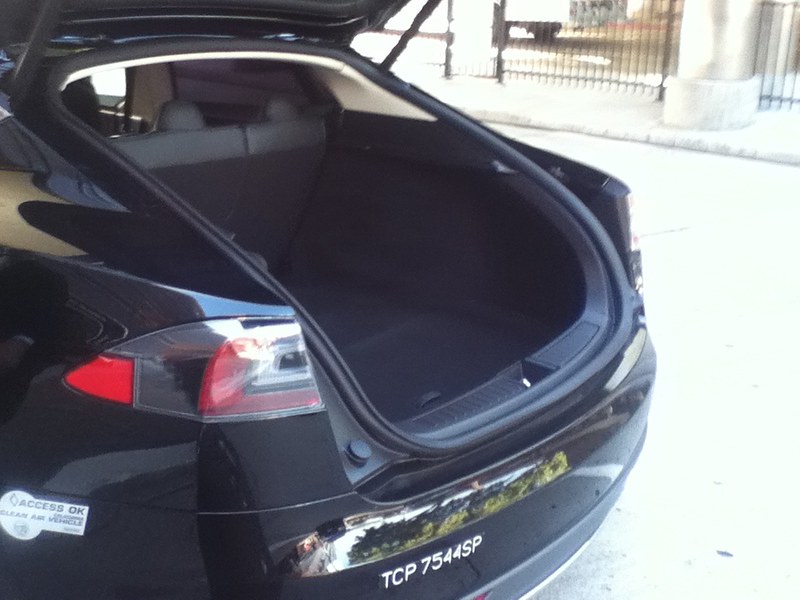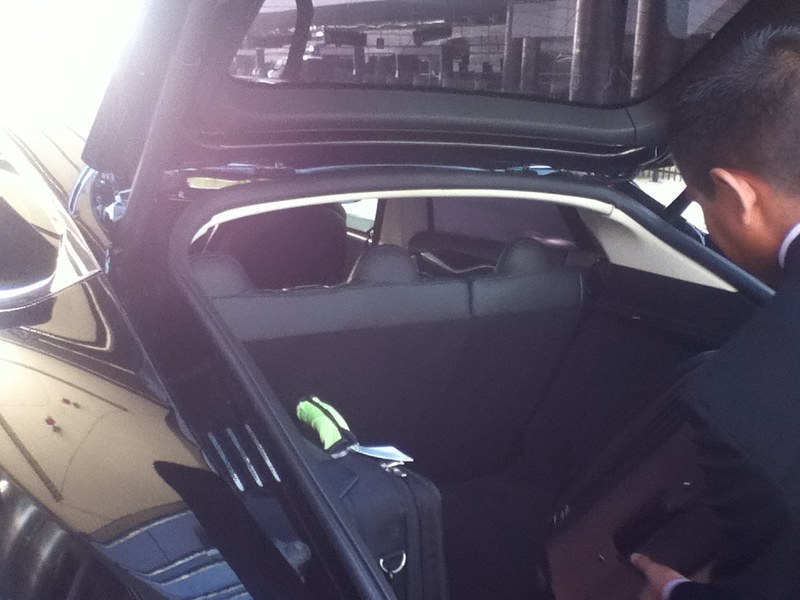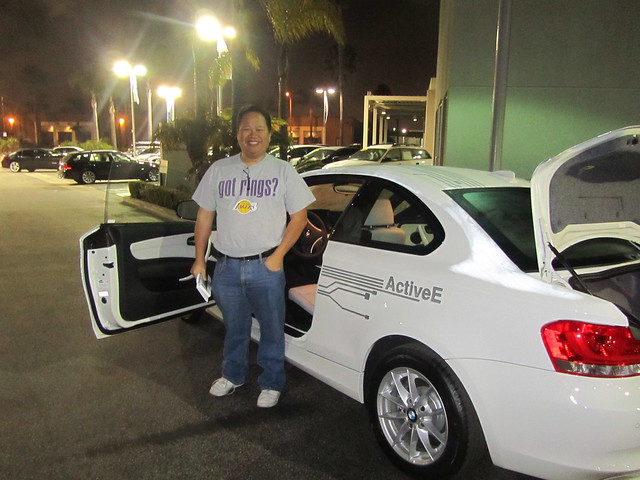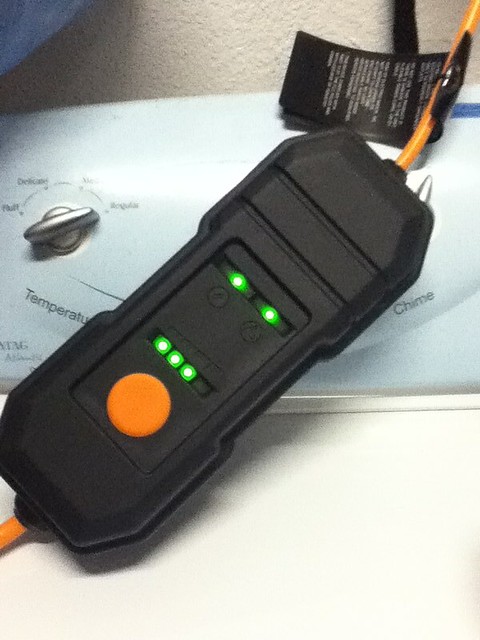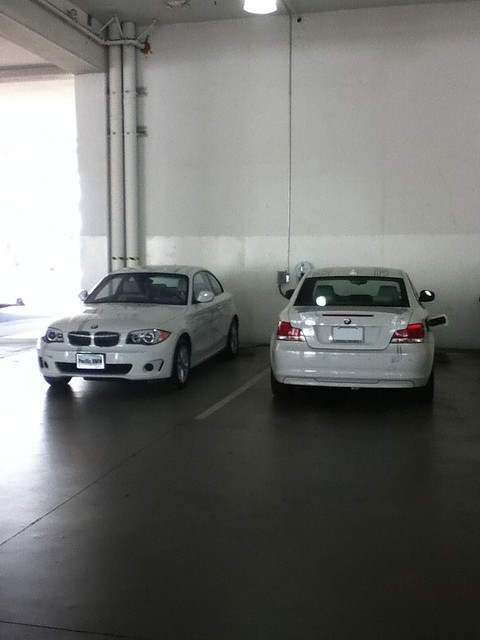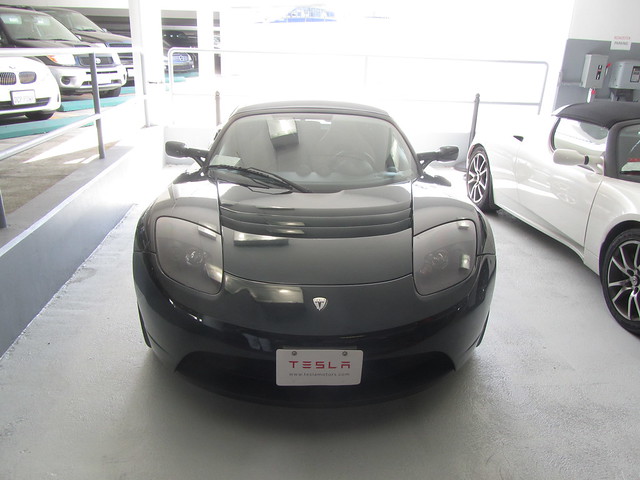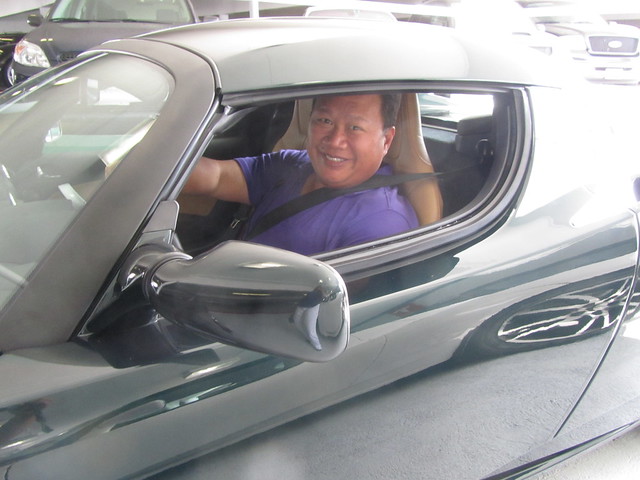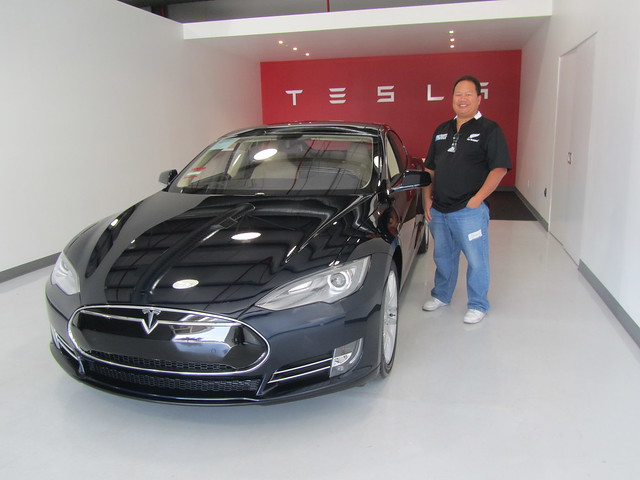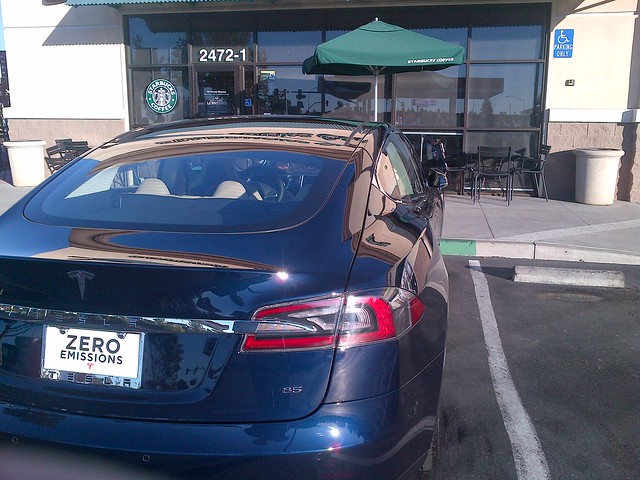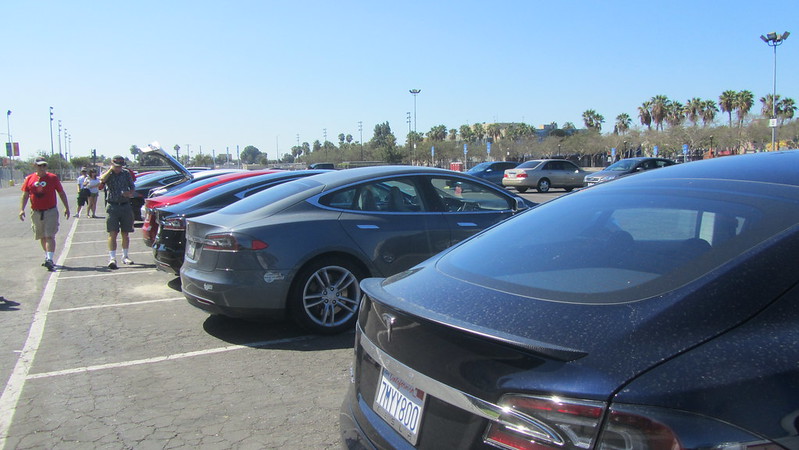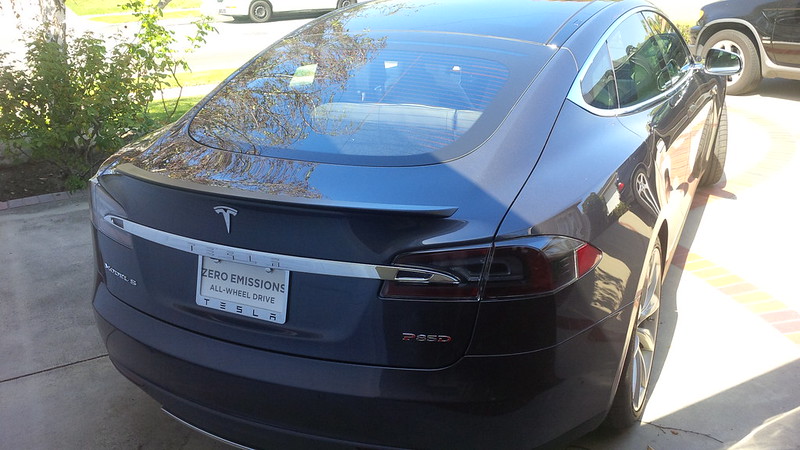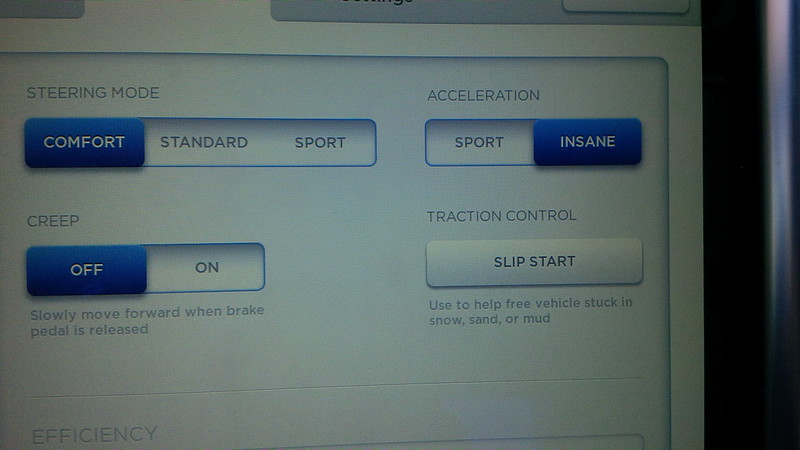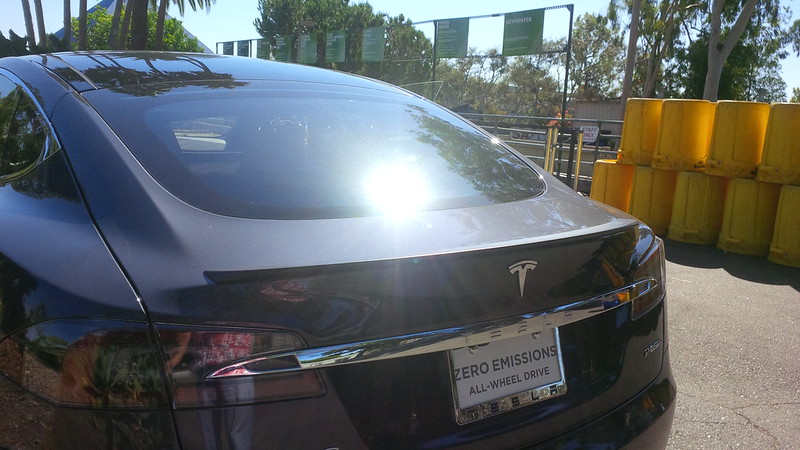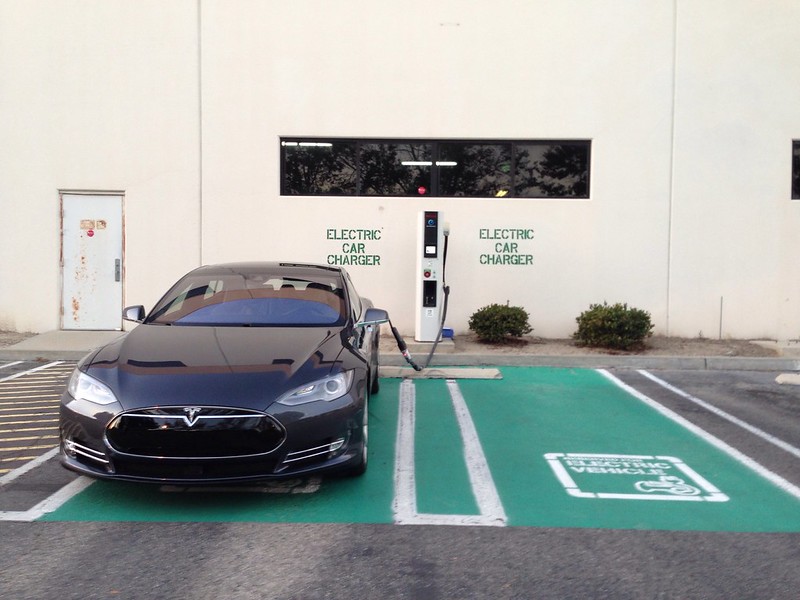With a hat-tip to the 2004 TV mini-series from Ewan McGregor and Charley Boorman. This is the first in a series of posts written about our 2016 EV Roadtrip written in the same manner as our 2015 trip. Here, There, and EVerywhere Trip – Day 01, i.e. summaries written for each day of the trip, published each day, this time two months from the day of the trip. It may seem funny to some to have a summer trip published at the start of the Fall, think of it as some daily entertainment for those that are back in their offices thinking about their past summer trips that could have been or thinking about their next trip.
After taking 23 days to travel from Southern California to Maine last year, we’ve been on several “long” roadtrips. Nothing close to the 8000+ miles of that trip, until this past summer when we took off for this trip.
So, why the long way round? Well… We got four referrals on the Fourth Tesla Referral Program (May 30, 2016 to July 15, 2016) and we expected to get an invite to the Gigafactory Party, so we thought to start our trip and go to Reno (a nearly 500 mile direct drive from home) via the Pacific Northwest (about a 1600 mile detour) with the intermediate goal of attending the EV Roadmap 9 Conference in Portland, visiting family who were spending time in Seattle, WA and family in Vancouver, BC before turning back for the party.
At the end of the day, I have to thank those that were convinced to pick up a Tesla Model S or Model X and decided to save some money by using our referral code. So, if you’re as inclined as those that took us up on the offer, and in the market for a Tesla Model S or Model X, you can save $1,000 USD/$1,200 CAD/£750 GBP (and whatever the equivalent is in your market) if you use our referral code – http://ts.la/dennis5317.
Without further delay, put yourself back a few months, and join us on our trip.
Day 1 – North to Portland, OR and stop somewhere in the middle. July 18, 2016
Last year, before we went on our cross-country road trip, we did a lot of pre-trip planning.
We did most of the same things, but since we were planning on a trip to Canada, we added taking our passport with us…. as well as a few other things.
One thing that we did not have readily available on last year’s trip was cleaning supplies. So, rather than purchase these on the road, should the opportunity to clean the car were to present itself, we brought our usual cleaning supplies.
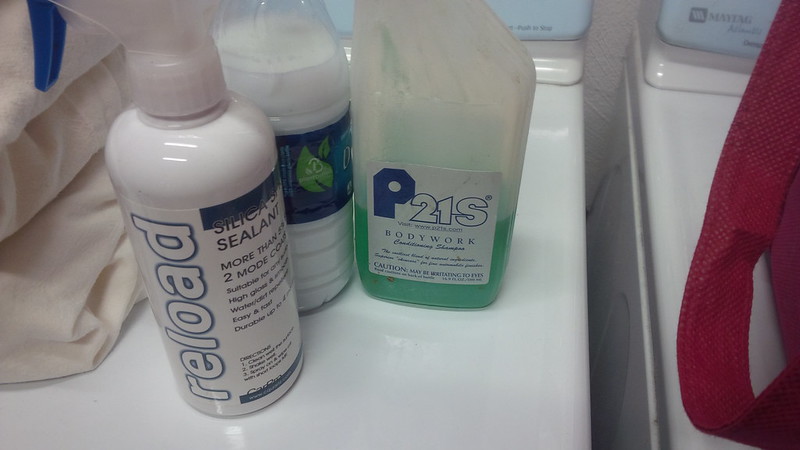
We figured to add an emergency kit for our trip as well. We brought a Survival Kit which we originally got for earthquakes, a first-aid kit, and an emergency radio. Just in-case.
For the past few weeks, we’ve been driving around town without our spare tire in the frunk, but this trip to the Pacific Northwest is an estimated 2,600+ Mile drive. We figured to put that spare back in. Additionally, our cleaning supplies and emergency kit fit in the “microwave” box in the frunk. (The joys of a rear-wheel drive 2013 Model S).
As I surmised, all our supplies fit in the “microwave” box and the spare tire keeps it in place. One thing I had to make sure was to ensure that it didn’t rattle or move about back there. Nothing more irritating than a persistent noise in a Tesla and didn’t want to “self-inflict” noise in this instance.
Figured to take a photograph of the mileage and other statistics for this drive.
The car’s mileage at departure is 60,896 miles and the Rated Range and we decided to range charge the car this trip. It used to fluctuate to 254 to 255 miles last year, now firmly at 254 miles. Granted, the firmware has had numerous updates since last year, so take that max with a “grain of salt.”
I took a picture of our trip stats at zero for B trip. I left home planning on tracking the energy use on a daily basis… …more on what we ended up using this for later.
Another difference from last year’s long summer road trip is the community at Teslarati now has many other members who update entries on the the released version of the Teslarati App for the iPhone. Last year’s big trip was focused on posting something on Teslarati for each stop. However, we’re not going to be adding too many new sites for this trip as the community has done a good job covering these locations. We’re actually going to be using what others have already provided for us.
On this first day, our intermediate goal is to reach Portland, OR by tomorrow evening. Aside from planning the long way around to the Tesla Gigafactory party on July 29, I am registered to attend the EV Roadmap 9 conference in Portland which is held on July 20 and 21.
With those goals in mind, we left home and proceeded North. Leaving home during Rush Hour is probably not the ideal way to start a trip, but considering this was a Monday drive, it is inevitable in Southern California.
Luckily, we have access to the HOV lanes because we consider two or more people to be a “High Occupancy Vehicle” drive in Southern California, coupled with the white stickers that are available to be issued for EVs.
Though the HOV access throughout Southern California is vast, it’s not endless… And we encountered further traffic on our Northbound journey.
Even areas around the Grapevine, which is normally pretty open in the summer had a bit of traffic, though not to the degree we see in rush hour commute.
Before we arrive at our first Northbound Supercharger, we cross the 61,000 mile threshold very early on in this trip.
And this achievement was quickly followed by the Tejon Pass summit.
This summit is at the apex of the approach to/from the Tejon Ranch Supercharger. Since we had enough range to skip this supercharger, and our spot consumption says we can go 999 miles, we decided to go to the Buttonwillow Supercharger instead.
The Buttonwillow Supercharger is just off the freeway and my wife was able to catch a great shot of the supercharger from the freeway. The supercharger stalls are installed in a manner where the back of the stalls face the street and the front face the freeway.
Buttonwillow Supercharger.
So, approximately 165 miles later, and a short visit in between, we arrived in Buttonwillow around 1:45 PM. Not as early as we had hoped. But it’s nice to be out on the open road, or at least Interstate 5.
The last time we were here, it was the middle of the night. Everything in the same parking lot was closed, so we stayed in the car and charged. Not only that, as previously mentioned, the superchargers are located in a manner that forces travelers to park with their backs facing the street. This orientation makes one feel exposed in an open, dark parking lot. However, in the bright light of the day, it’s fine.
This time, not only did we need to refuel the car, we needed to refuel the driver. We drove out of Metropolitan Los Angeles area without getting any coffee and this supercharger is located at a parking lot adjacent to a Starbucks.
It sure looks like we were not the only ones that had the idea to stop off and get some coffee here. Considering this was the middle of the day, in the outskirts of Bakersfield, it’s pretty busy.
Something tells me that I will be stopping here more often than Tejon Ranch and I figured to document the business hours for the Starbucks
and the Subway, next door.
After getting charged up, we decided to head off to Harris Ranch, our next stop on our I-5 Northbound route.
It is quite common on this route to see produce moving around in trucks. Considering that the center of California is where many of the farms are, it is only logical to see produce trucks in this route.
As we headed North on this route, we spotted an interesting truck which we couldn’t determine what was on it until we got closer.
Sure looks like garlic. Which is interesting because the truck is South of Gilroy and headed Northbound. Gilroy, California is well-known for its Garlic Festival (and for one of the original supercharger locations for Tesla drivers, the Gilroy Supercharger). I guess there are other garlic producing areas in California.
However, the next truck immediately ahead of the garlic truck made us wonder…
…a Tomato truck! (Not necessarily the one pictured because we drove past that one…) So, a garlic truck, a tomato truck…. we were wondering where the pasta truck was going to be.
Alas, we were disappointed because we never did see that pasta truck, and now I’m craving Italian food.
Harris Ranch Supercharger
Our next stop Northbound is the Harris Ranch Supercharger.
We were the seventh to arrive, and it looks like everyone else in this HUGE 13 stall supercharger have done this travel before.
Every Tesla traveling through this location is not sharing its charge with its A or B twin. I often will try to pick stall 7A when passing through Harris Ranch. It is the one pictured on the far right, beside the silver Model X.
So far, our drive North has been quite ordinary. The many trips to the Bay Area that we’ve done since last year had traversed through the same routes. (Here is one when we tried to drive up and down the same day.) However, our next stop is the Manteca Supercharger. A location that we’ve never been to.
To prepare for that new location, I figured to check out the entries for the particular stop on Teslarati’s app (which is now available over a browser.) Looking at the comments, I stumble across one entry (from July 3, 2016) that put me a little “on alert.” Seeing that we won’t make it to the Corning stop (the one AFTER Manteca) I decided not to startle my wife on the entry that I read on Manteca.
Just North of Harris Ranch is the cattle operation that makes the beef at the Harris Ranch restaurant famous. (This is also one of the reasons why I think that Tesla made the HEPA Filters for the Model X and newer Model S 🙂 .)
We were lucky in that the “wind” was favorable for us today.
So, we drove North. Where we normally would head toward Gilroy (the Garlic Capital of California), we stay on I-5 to get to the Manteca Supercharger.
Just after the turn-off for Gilroy is an interesting site.
Not sure what it was, but it looks like a cool church tower. I wonder if its one of the many “Missions” that Spain and the Catholic Church had set up throughout California. I suppose if I had spent the fourth grade in California, I would have known about the missions, but I didn’t. So, we zoom pass it.
We keep seeing tomato trucks on I-5, but still no pasta truck.
We see different crops. Not sure what these trees are, but it’s pretty orderly.
Been pretty used to seeing cows throughout the drive, but apparently, there were also sheep.
After a few hours of driving, we find ourselves at the Manteca Supercharger.
Manteca Supercharger
This stop is going to be a longer one than our normal stops. We arrived at the site with 58 miles of range left on the gauge. Our plan is to stay on I-5 and charge at the Corning Supercharger (177 miles away) and find a place to stay the night between Corning and Mt Shasta. We like to have a buffer for our charge, so we planned on getting near a maximum range charge to provide us with flexibility as we head North in the evening.
We were not alone at the supercharger when we arrived at Manteca. One of the things that one starts to notice on heavily traveled supercharger routes are fellow Tesla travelers or at least their vehicles. This stop was no exception, we’ve been traveling with the Model X at the far charger since Buttonwillow.
This supercharger is located in what looks like an like a recently completed shopping center. However, upon further inspection, I wonder if the center ever got to the point where it was full. I was a little comforted with seeing another car here, we figured to head out and forage.
We walked toward some traveler convenient locations and grabbed some dinner.
Because I was a little “on edge” from the entry on Teslarati and not wanting to leave the car unattended too long, we headed back.
I was able to speak with our fellow traveler, and it turned out that the X owner was headed to the EV Roadmap 9 conference in Portland, and he was planning on spending the night at Sacramento. We spent some time chatting and getting to know each other. We wanted to get a little further than Sacramento. After he left, we spent the downtime at Manteca Supercharger to finalize our destination for the evening. We booked our hotel at the Hampton Inn and Suites at Red Bluff, CA. There seems to be available NEMA 14-50 outlets at the site, but the information was contradictory as to whether the charging is free to use or if there was a charge. Upon conversation with the agent (who was new) at the front desk, we determined that it was best to supercharge before we get to the hotel as she indicated a $50 charge to plug in (she was new and thought that it was the same as what the Hampton Inn would charge RVs that are staying at their hotel for the night.)
We stayed at the Manteca supercharger longer than the our fellow traveler in the X.
Without anyone else near us, these superchargers really feel remote from everything else. That entry on Teslarati really perked my awareness for danger, so I thought that it might be good to head out as soon as we had a “good buffer”.
We proceeded Northward to the next stop for the drive. We’re definitely in the agricultural part of California on this drive.
A water tower welcomes us to the State Capital. As long as the drought has been in California, part of me was wondering how full this particular water tower can be.
We pass Sacramento on our way to Corning and Red Bluff.
and have the open road ahead of us.
No matter how open the road is, Interstate 5 is simply not as empty as other Interstates.
To pass the trip, one of the things that we’ve decided to do on this trip was to see if we can catch up to our 20+ year old nephews in Pokemon Go. Our thesis was that the makers of Pokemon Go would make different Pokemon common at different cities, so we tested this hypothesis and started playing the game. Here is a picture of my better half playing while I drove to Corning.
We arrive at Corning in the evening and the parking lot was somewhat empty.
Corning Supercharger
It was at this stop that I noticed that I was instinctively resetting Trip B on each supercharger stop. I basically sabotaged my plan on tracking daily usage and decided to measure TOTAL drive from this point forward for this trip rather than a day-to-day total as we’ve done in past trips.
This location was a little “scary” at night, not Green River, UT “scary”, but a little more unnerving than the Buttonwillow, CA Supercharger at night.
There was a strange person hanging about, so we stayed for as long as we felt safe and headed twenty miles down the road to our hotel for the evening.
Hampton Inn and Suites, Red Bluff, CA
I was glad that we decided NOT to rely on charging at the Hampton Inn overnight as the NEMA 14-50 chargers for the hotel is located on the extreme side away from the main desk and at a location of the parking lot that seems to be exposed. It turned out that the new desk clerk I spoke to was incorrect and that we could have parked and charged for free at this hotel. Having the car parked closer to where I felt the car would be safer was more important than getting a slow charge overnight. We decided to park the car near the front with a full 200 miles of range left and left the car on “always connected mode” rather than let it go to charge saving mode as we turned in to the hotel for our overnight rest.
I planned on plugging the car in for a slow charge in the morning so that I can familiarize myself with this location and to “add it” to my car’s “places that I charged” database. With the plan in place, and shelter found for the evening, we turned in after driving over 575.8 miles for the day. Not quite the power-drive from last year, but definitely not a leisurely stroll.
Click here to continue on to the next day of this series, Day 2.
